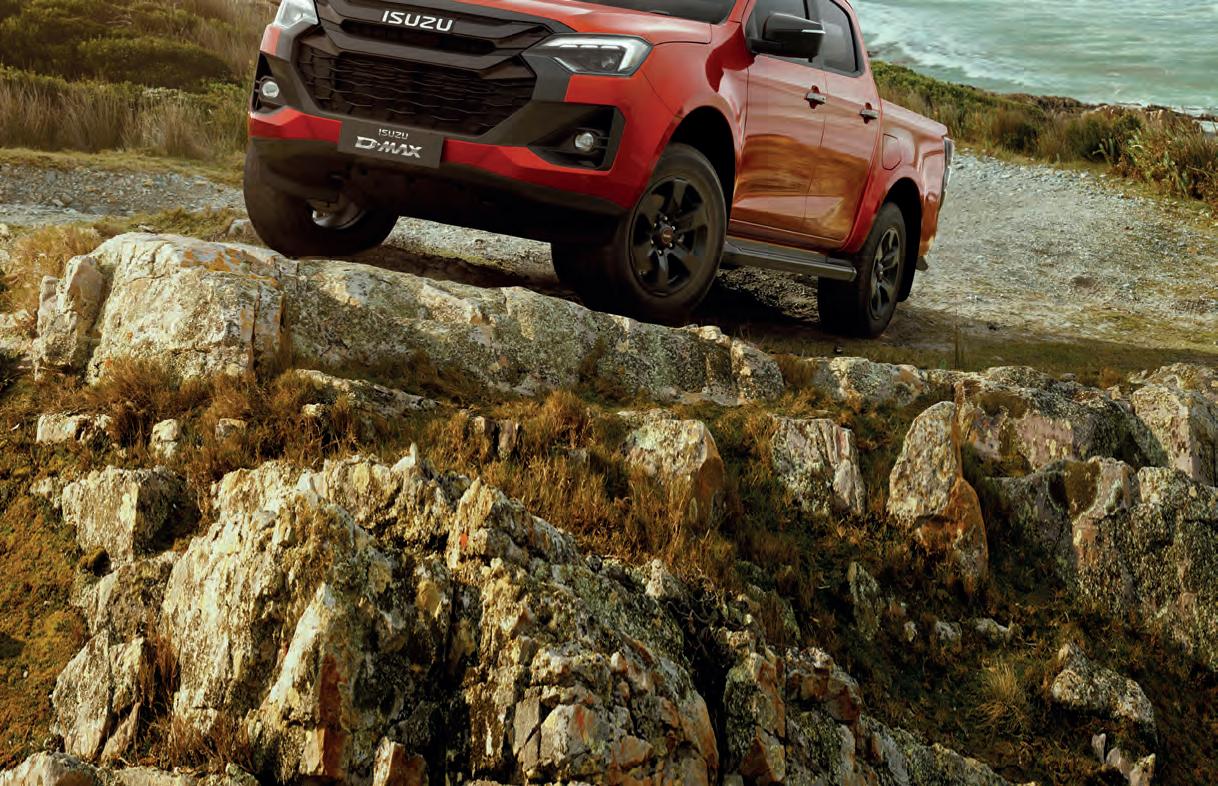
DRIVEN FORD RANGER WILDTRAK X: Pick-up champ with proper off-road skills





DRIVEN FORD RANGER WILDTRAK X: Pick-up champ with proper off-road skills





Across the great American wilderness in the footsteps of the Gold Rush pioneers on the Applegate-Lassen Emigrant Trail




































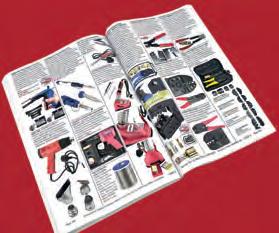
























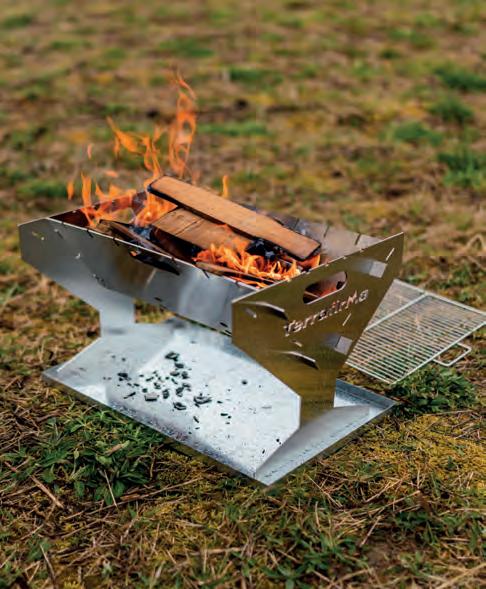
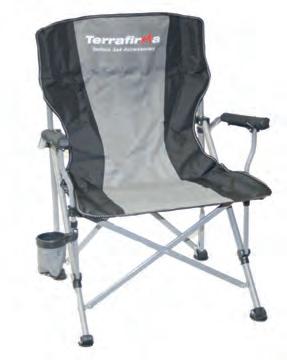
Part
TF1740
Whether you’re embarking on an off-road expedition or packing up the kids for a summer camping trip in your Land Rover, having the right gear makes all the difference.
Prepare for your next camping adventure with high-quality, purpose-built gear that ensures a smooth and stress-free experience—wherever the road takes you!
Scan the QR Code to explore our full range
Share Your Adventure With Us!
We love seeing Terrafirma-equipped vehicles in action! Send us pictures of your off-road adventures, camping set-ups, and expedition builds for a chance to have your vehicle featured in the next Terrafirma Catalogue.
Email:

Terrafirma Portable Power Station
TF1741 Terrafirma Power Panel
TF1730 Terrafirma Portable BBQ / Fire Pit
TF1720 Terrafirma Camping Chair
TF1722
Terrafirma Camping Table








AWNING EXTENSIONS & ACCESSORIES AVAILABLE


Terradactyl Awning

TF1704 Terrafirma Terradactyl Awning 2.5m / 270 degrees
TF1714 Terrafirma Terradactyl Awning 2.0m / 270 degrees
TF1700 Terrafirma Expedition Awning 2.5 x 2.1m
TF1701 Terrafirma Expedition Awning 2.0 x 2.1m
TF1702 Terrafirma Expedition Awning 1.4 x 2.1m
TF1703 Terrafirma Expedition Awning 1.2 x 2.1m
TF1707 Terrafirma Hard Case LED Awning 2.5 x 2.5m
TF1708 Terrafirma Hard Case LED Awning 2.0 x 2.0m
TF1731 Terrafirma LED Shower Awning 1.0 x 1.0m
- Twist & Lock Legs, sturdy guy ropes
- 400D Ripstop Fabric

- Built in heavy duty PVC coated nylon cover
- Mounts to roof rack or any solid structure
- Integral T Slot Extrusion Panel
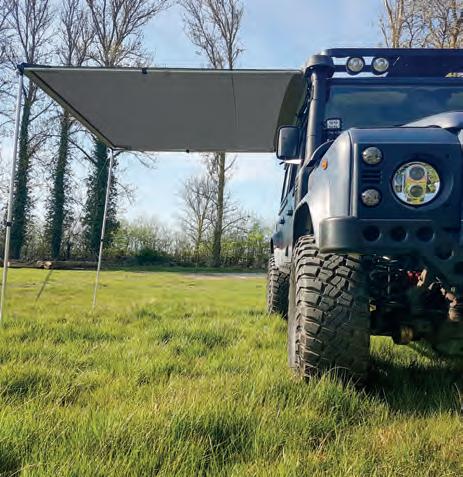


Tel: 01283 742969
Email: enquiries@assignment-media.co.uk
Web: www.totaloffroad.co.uk www.4x4i.com
Online Shop: www.toronline.co.uk
Facebook: www.facebook.com/totaloffroad www.facebook.com/4x4Mag
Editor Alan Kidd
Design Ian Denby-Jones
Contributors
Mike Trott, Gary Martin, Olly Sack, Gary Noskill, Dan Fenn, Paul Looe, Tom Alderney, Chris Collard
Photographers
Steve Taylor, Richard Hair, Vic Peel, Harry Hamm
Advertising Sales
Tandem Media
Tel: 01233 555735
Issy Roberts
Tel: 01233 228752 isabelle@tandemmedia.co.uk
Advertising Production
Colin Swaffer: 01233 220246
Jonathan Graham: 01233 220247
Jemma Heslop: 01233 555736
Subscriptions Agency
WW Magazines, 151 Station Street, Burton on Trent, DE14 1BG Tel: 01283 742970
Publisher and Head of Marketing
Sarah Moss
Email: sarah.moss@assignment-media.co.uk
To subscribe to 4x4, or renew a subscription, call 01283 742970. Prices for 12 issues: UK £42 (24 issues £76); Europe Airmail/ROW Surface £54; ROW Airmail £78
Distributed by Marketforce; www.marketforce.co.uk
Every effort is made to ensure the contents of 4x4 are accurate, but Assignment Media accepts no responsibility for errors or omissions nor the consequences of actions made as a result of these. When responding to any advert in 4x4, you should make appropriate enquiries before sending money or entering into a contract. The publishers take reasonable care to ensure advertisers’ probity, but will not be liable for loss or damage incurred from responding to adverts
Where a photo credit includes the note ‘CC BY 2.0’ or similar, the image is made available under that Creative Commons licence: details at www.creativecommons.org
Overlander 4x4 is published by Assignment Media Ltd, PO Box 8632, Burton on Trent DE14 9PR © Assignment Media Ltd, 2025


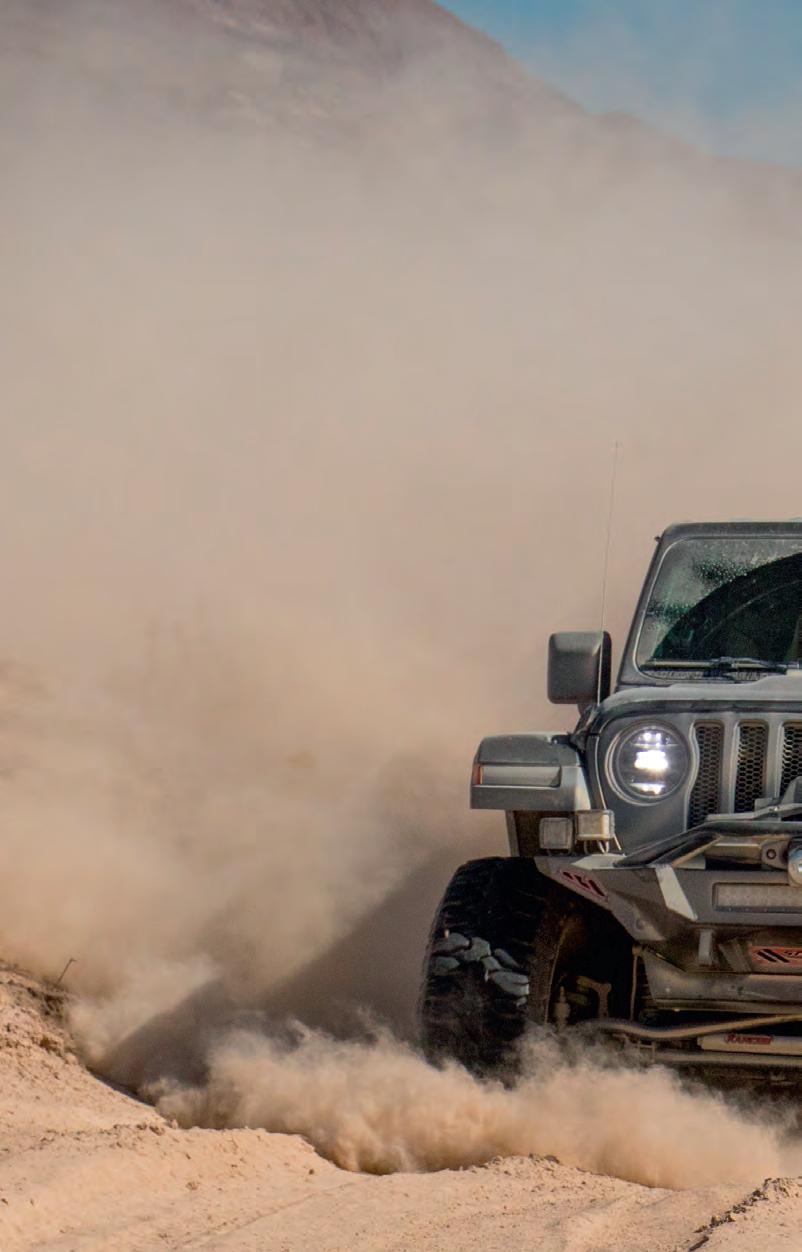




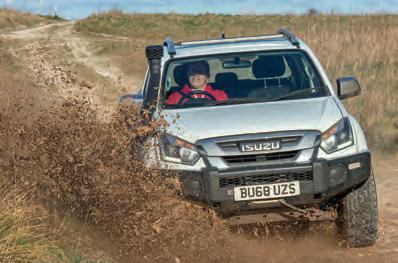











Pay quarterly by direct debit and you can get Britain’s only all-marques 4x4 magazine delivered to your door – for less than half the price on the front cover!
4 News
Jeep unveils the Avenger in 4x4 hybrid form – and it’s an off-roader at heart. Plus, Land Rover launches a series of driving experience days aboard some of its oldest classic models
8 Products
On-board shower units for bringing cleanliness to your off-road travels. Plus, hardcore top and tail kit for Defenders with Rimmer Bros’ range of winch bumpers and Terrafirma’s chassis mounted swingaway spare wheel carrier
54 Subscribe
Get Overlander 4x4 delivered for a fraction of the cover price
64 Next Month
Ten great green laning routes to help you get the best out of your 4x4 this summer
Driven
12 Ford Ranger Wildtrak X
Our reigning Pick-Up of the Year in premium form –and with added off-road intent on top
16 Subaru Outback
The evergreen all-terrain crossover proves once again why it’s a serial class winner in our 4x4 of the Year awards
Two ultimate off-road machines from back in the day: a Shogun-based buggy and one of the very first super-Jimnys, both built by the master of the G-Wagen axle conversion
30 Gearbox Genius
You’ve heard of the Rock Lobster transfer case for Suzukis. Well, imagine building a hybrid gearbox out of Jeep Wrangler and Isuzu Trooper parts –and creating a legendary vehicle in the process
38 Range Rover Sleeper
No, not a Carawagon – this Classic is the kind of sleeper you get when you add a Corvette V8…

A convoy of Jeeps follow the route taken by the original 49ers as they struggled through the wilderness in a bid to strike it rich out west
4x4s
60 Isuzu D-Max GO2
Fun with all-terrains on a bone-dry Salisbury Plain




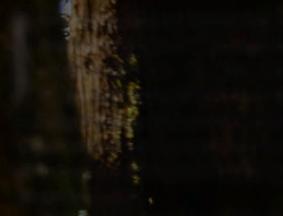
It’s been on the way forever but the Jeep Avenger is about to hit the road in plugin hybrid 4xe form. The latest version of the high-selling B-SUV promises to bridge the gap between the full EV, in which form it was first launched in the UK, and the petrol and hybrid models which have come since.
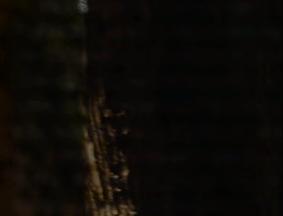

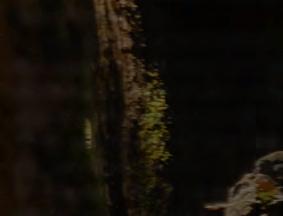
While there’s not yet any sign of a Trailhawk version to take advantage of the 4xe drivetrain, which drives all four wheels, Jeep has not ruled this out. For now, the 4xe will be available in three trims, all of them powered by the same combination of 1.2-litre turbocharged engine, and dual 21kW, 48V electric motors. This delivers 145bhp to all four wheels via a six-speed dual-clutch auto box.
Jeep says the drivetrain allows the Avenger to tackle ‘even the most adventurous off-road terrains’. It boasts 210mm of ground clearance (an additional 10mm compared to the rest of the Avenger range), meaning 22° approach, 21° breakover and 35° departure angles, and can ford up to 400mm of water.
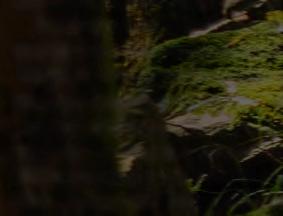

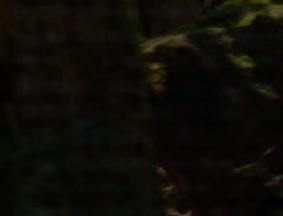

In addition, a 22.7:1 reduction gear in the rear axle makes for an extraordinary 1400lbf.ft of torque at the wheels. This promises enormous tractability – Jeep says the vehicle can scale gradients of up to 40% on unpaved surfaces, with 20% achievable even if the front wheels have no grip at all. Although the Avenger doesn’t have low range as such, its drive modes offer the option of a virtual centre diff lock – as well of course as programs tailored to driving in mud, sand and snow. Multi-link rear suspension also promises better articulation and a smoother ride on rough surfaces, and design elements specific to the 4xe include enhanced underbody protection, a rear recovery point, Goodyear Vector 4Seasons GEN-3 M&S tyres, waterproof seat fabric and an anti-scratch front bumper.
At the time of writing, the configurator on Jeep’s UK website was only showing

two trim levels for the 4xe – Upland and North Face. However an Overland model has just been announced and is due to slot in between them any time now.
Upland models feature adaptive cruise control, twin 10.25” media and dash screens and a 180° ‘drone view’ rear camera. Overland adds full LED projector headlights, privacy glass, wireless phone charging, 360° parking sensors and Level 2 assisted driving.

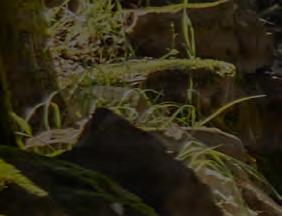
At the top of the range, the Avenger 4xe North Face is a limited edition with a total run of 4806 vehicles (a number chosen as it’s the height of Mont Blanc, Europe’s highest peak). This was created in alliance with outdoor clothing brand The North Face, whose signature Summit Gold colour plays a prominent role in an exterior design which Jeep says is ‘strategically designed to blend seamlessly with the natural environment.’


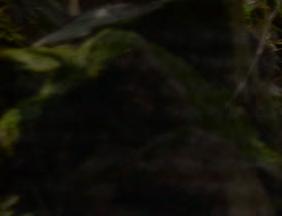
Further elements of the vehicle’s styling include 17” black alloys, topographic lines on the grille, a Summit Gold skid plate protection insert and an anti-reflective bonnet sticker. Inside, you’ll find more topographic lines on the dashboard, along with a silhouette of Mont Blanc and the inscription ‘One of 4806’. The seats and windscreen are both heated, while elsewhere within the cabin you’ll find multi-colour ambient lighting, built-in sat-nav and a hands-free powered tailgate.










With more than 160,000 orders since launch, the Avenger has been a gamechanger for Jeep in Europe. Adding the capability that 4xe brings won’t necessarily add the same number again to its bottom line – but even if it doesn’t double sales, it certainly means an exponential increase in the vehicle’s appeal for anyone who wants to use it the way a Jeep should be. The order book is open now, with the Upland priced at £30,999 and the North Face at £34,999; deliveries are scheduled to begin in May 2025.



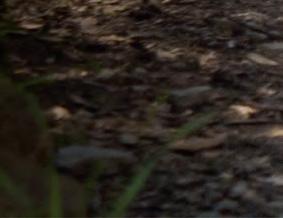






Land Rover Classic has announced that it is to open up its collection of historic vehicles for the public to drive on a series of exclusive events. Defender Classic: Icons Off-Road will take place at the original Land Rover Experience centre in Solihull, where clients will get behind the wheel of ‘some of the finest examples of historic Land Rover vehicles from over the years.’
For the price of £595, you’ll also learn about the Land Rovers you’re driving. ‘Each experience will also include the history of the subject vehicles, with every JLR instructor on hand to make sure that guests get to know the car they will be driving in the finest detail, down to the last rivet.’ In addition, the day starts with a tour of the Jaguar Land Rover Classic Works facility, demonstrating the specialised work done there as part of its restoration and customisation programmes.
Solihull is particularly appropriate as the location for the driving experience as it was here that the company’s original test and demo track was created back in 1949. This was later replaced by the famous

Jungle Track, which remains largely intact today and which will host the driving element of the experience. ‘Using JLR’s finest and most knowledgeable instructors, Land Rover Classic has carefully curated itineraries that display the most incredible selection of cars and the extent of their capabilities. On off-road dirt tracks, guests will have the opportunity to drive each vehicle exactly how they were designed to be driven, all on specialist courses.
‘It’s on these tracks where early vehicles have been tested by engineers, where media first drove groundbreaking models and where owners have had their first true taste of their vehicle’s unmatched allterrain capabilities.’
With vehicles still being made at Solihull today, the driving experience is a great way of bringing together Land Rover’s past and present. The JLR Classic facility in Coventry, meanwhile, is ‘a hub of heritage, craftsmanship and engineering excellence (which) offers the chance for guests to see the process of sourcing authentic parts, bespoke commissions and even continuation models of legendary models.’

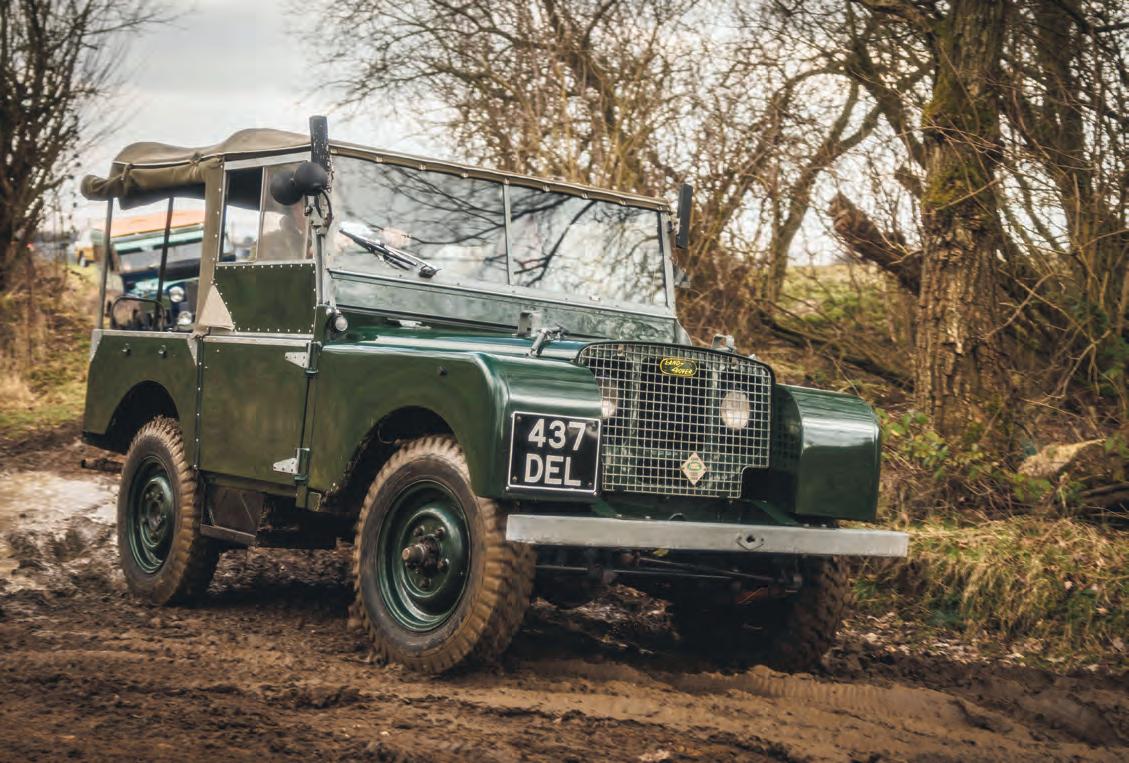
The collection of rare, special and one-off Land Rovers within the building should keep you busy for more than just a few seconds, too.
‘We have carefully curated these experiences to appeal to everyone who loves the iconic Defender and its predecessors,’ commented JLR Classic’s recently appointed new Director Dominic Elms. ‘It’s not often you get to drive such cherished classic vehicles in a way as immersive as this, or on tracks as evocative to the history of Land Rover.
‘We believe that these experiences are a truly unique opportunity for every guest that attends – one that they will never forget – including seeing our dedicated specialists applying their skills here behind-the-scenes at our Ryton-onDunsmore factory.’
The Defender Classic: Icons Off-Road experiences are scheduled for 13 May, 18 June and 15 July 2025, and the price includes catering. Places are subject to availability, so get your £595 ready and head for www.jaguarlandroverclassic.com/ classic-experiences to book your place.
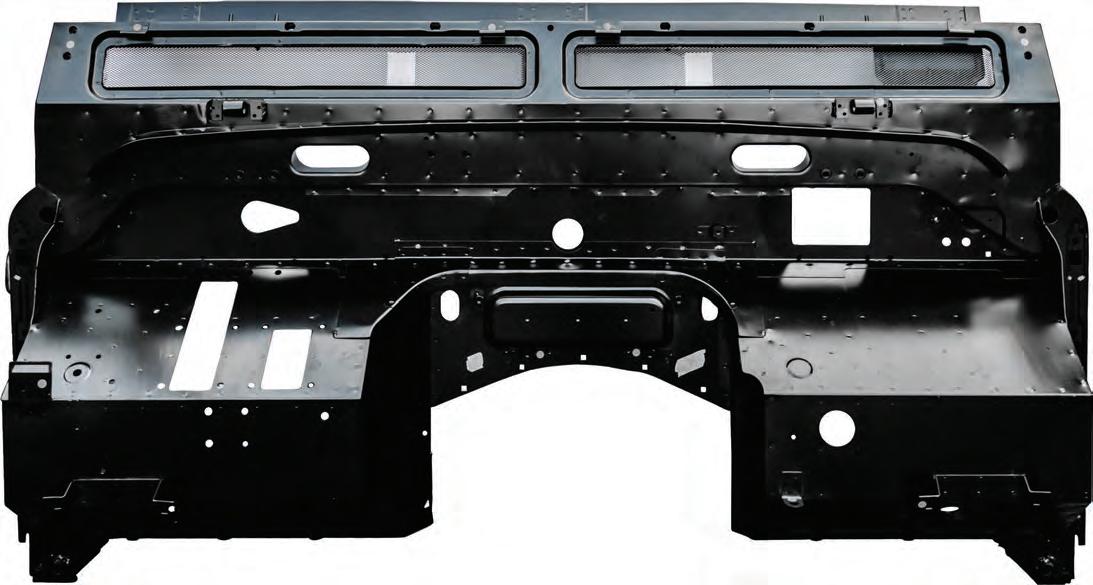
Universal Replacement Bulkhead
Defender - 1983 - 2006
DA2970 Right hand drive
DA2971 Left hand drive
Loose brackets are included in the kit to allow for model year differences made by Land Rover over the years. Some minor modifications to the transmission tunnel may be needed to accommodate different transmission tunnels, with the V8 for example. Made in the West Midlands just like a Land Rover.
DA4678
Universal Replacement Bulkhead Series 3

Accepts early type door seals. Manufactured with zinc coated steel. Etched primed and sealed. All UNF fittings. Cut-outs and strengtheners in both footwells to accommodate LHD and RHD. Weld on gearbox cover. No hand throttle holes.

Stainless Steel Bulkheads Defender - 300Tdi & Td5
DA2970SS Right hand drive
DA2971SS Left hand drive

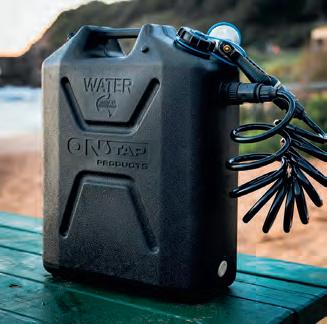
Isuzu recently unveiled the latest in its line of Basecamp demo trucks, based on this year’s updated version of the DMax. Based on the AT35 model, it showcases the wide variety of ARB overlanding equipment available as approved accessories through Isuzu’s own dealer network. We’ll take a proper look at the vehicle itself next month, but one of the most eye-catching elements of its spec list is an ensuite tent and shower room. The word ‘ensuite’ might be slightly misleading, because you don’t get into it straight from

your roof tent, but they’re both mounted on the same structure (ARB’s own Base Rack, naturally) and they go together like, well, a bog and a bedroom.
The shower itself comes from Ontap, which sounds a bit like a particularly memorable Bond baddie but is in fact a company which, like ARB, hails from Australia. Sold in the UK through ARB’s importer here,
it combines a 22-litre reservoir with a 12v pump delivering up to 12 litres per minute. The spray head has seven positions, so you can also use it for rinsing off your equipment, dishes, dogs and so on. It doesn’t heat the water, but you can fill it with warm in the first place – and depending on the flow rate you choose, you can get up to five minutes before it runs dry.
Various prices | rimmerbros.com
IF YOU DRIVE ONE OF THE MODERN GENERATION OF PICK-UP TRUCKS, there are some outstanding options available for heavy-duty winch bumpers. But if you drive a Land RoverDefender (proper-shape, obviously), the really outstanding thing is how much choice you’ve got in this area. Actually, even more outstanding is the fact that they only tend to cost about a fifth of the money to buy, and they take half an hour to fit rather than a couple of
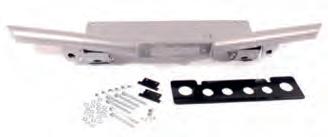

days. Anyway, to keep up with the theme of general outstandingness, Rimmer Bros currently has something like nine different designs either in stock or a phone call to a supplier away.
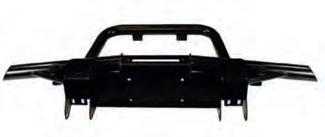
You’re looking at less than £250 (plus VAT, admittedly) for the entry-level bumper in the Rimmer range. Up top, Terrafirma’s Pro Taper unit costs less than double that, and there’s a whole lot of alternatives in between including tubular and galvanised options. There are various bolt patterns for the winch mounts, too, as well as flat and tapered ends and choices with and without A-bars. You can browse the full range at rimmerbros.com.
£638.52 (black), £649.32 (light grey) | www.maltings4x4store.co.uk

FEW NOISES IN THIS WORLD ARE MORE IRRITATING THAN THE NON-STOP RATTLE you get from a Defender’s back door that’s been damaged by the weight of the spare wheel mounted on it. Well, so long as you don’t listen to commercial radio. Terrafirma’s spare wheel carrier can’t do anything about crap DJs who make you want to stick nails in your ears, unfortunately, but being purely chassis mounted it can take the weight of whatever sized spare you need to carry. It’s ideal for all original-shape Defender models, including pick-ups and station wagons, where you want to be able to open the spare wheel carrier independently of the rear door or tailgate.
The single-arm carrier is beautifully engineered for a smooth, easy action, helped by a gas strut which assists it on opening and keeps it there on side slopes and in strong winds, preventing the carrier from closing under its own weight and allowing comfortable access to pick-ups. When closed, it’s held in place by a clever over-centre lockable lever arrangement.


Clearance offers currently available from KS International include 38% off the price of a Genuine OEM flywheel for the Nissan Navara NP300. This normally costs £438 including the VAT, but it’s currently reduced to £270 – or £225 without the dreaded. Many other engine parts for the 2015-onwards Navara are also on offer at present, including turbos, timing chains, injectors, vacuum pumps and inlet and exhuast manifolds. You’ll find them all at www.ks-international.com
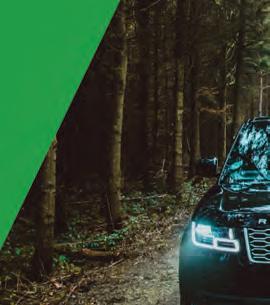








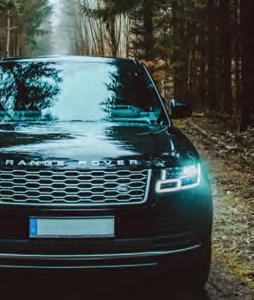







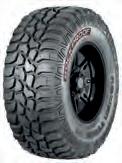



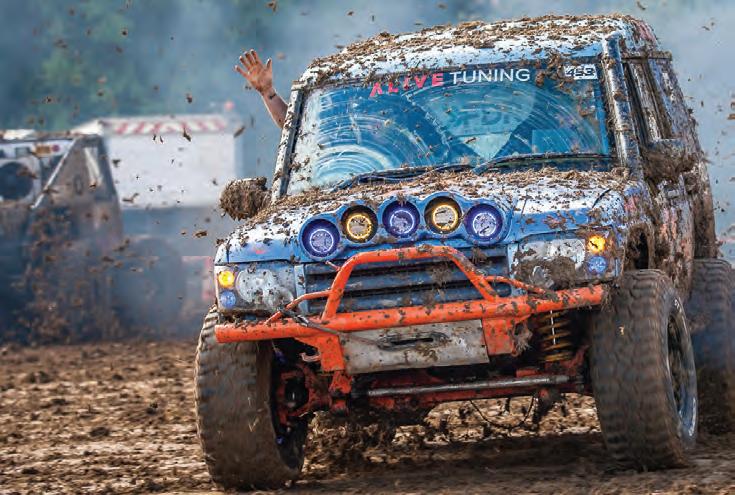







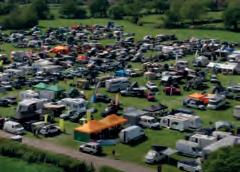










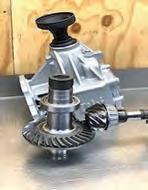












Two years have passed since the Ranger was launched in the UK. It has won our Pick Up of the Year award at each time of asking and become a common sight on the road, even though it’s priced as a more premium level than the last model and has stronger competition than ever from the Isuzu D-Max.
Ford’s sheer size means it can cast its net far and wide with the range of models you can choose from. Hence the Wildtrak X, a version of the mid-range Wildtrak with a spec that’s tailored a little more towards off-road use. It’s available only with the fourcylinder 2.0 TDCi engine, tuned for 205bhp and mated to a 10-speed auto box, and
priced from £42,350 plus VAT (£50,820 with it included).
Though the Wildtrak is only a mid-range trim level in the model line-up, it’s still a very well equipped one with things like all-round parking sensors, leather, heated seats and steering wheel, wireless phone pairing, LED headlamps and 360-degree






approach lighting. It also includes Soft-Ride Suspension, however in the Wildtrak X this is replaced with Off-Road Suspension.
You also get 265/70R17 all-terrain tyres, a locking rear diff, metal underbody protection and selectable drive modes on a rotary dial. Not a bad combination, all told, and one which gives the Ranger a decent
claim to be considered as one of the bettervalue turn-key off-roaders on the market.
Nonetheless, it’s rather unlikely that a company would buy this version of the Ranger as an off-road work truck or pool vehicle. The Wildtrak is aimed at the sort of user-choosers and small businesses whose custom has buoyed decades of growth in

The ‘X’ in the Wildtrak X name denotes a vehicle tuned for enhanced off-road ability. This could mean little more than a badge and some plastic cladding in some car makers’ worlds, but Ford means business. For an extra £2000 over the standard Wildtrak, the X model adds steel bash plates and a locking rear diff, as well as 265/70R17 General Grabber AT3s and heavy-duty off-road suspension, the latter using bypass shocks to provide more controlled handling and greater durability in prolonged used on punishing terrain
the pick-up market – but whose benefit-inkind tax breaks are about to disappear in a puff of budgetary smoke.
So, who’s going to be buying these in future? The answer is private buyers who want a well specced and capable off-road machine and don’t value a station wagon over a pick-up. The Wildtrak X is still cheaper than the Defender, Wrangler, Grenadier and Land Cruiser, after all, even after you’ve paid the VAT – and while at least two of these are more focused off-roaders, none of them are out of reach in terms of the all-round abilities they offer.
Inside the cabin, the Wildtrak X is fundamentally the same as the Wildtrak. That is to say, it’s big and lavish, and it looks and feels more like an SUV than some SUVs themselves still do.
It’s better at accommodating people than some SUVs, too. The front seats are adjustable through a huge range which means that even if you’re about seven feet tall you should still be able to find yourself a comfortable driving position.
Our editor is only a six-footer but he likes to stretch out when he’s driving. It’s rare for him to find a vehicle in which he doesn’t need to push the seat all the way back as far as it will go, but this was one of them. Yet

when it was in this position, he could still sit behind it – a mark of a truly spacious truck. Headroom is excellent all round, too, as is the view from the front and rear seats alike.
Up top, the dashboard area is dominated by a huge, vertically positioned media screen. This adds a real sense of occasion and makes the cabin feel premium the way no amount of leather ever could – the effect really is superb. The system works well, too, responding quickly to commands and hooking on to a smartphone without any fuss, and the screen turns into a good, clear rear-view camera and bird’s-eye monitor when you put it into reverse. This can feel a bit ridiculous in dinky little urban SUVs, but in a beast like this it’s a must-have.
Even before you get as far as the media screen, however, the Ranger’s cabin is already impressive. It’s imposing but also elegant and classy, with a less-is-more approach to the choice of colours and textures. We don’t normally get excited about cabins that are all black and dark grey but, perhaps because of the sheer size of all the elements, it works better than it would with an array of different shades.
All that sheer size is translated into a big choice of places to stash your stuff, too. There’s a really big cubby box, good door pockets and two useful gloveboxes with an open tray between them – enough to swallow up any reasonable collection of personal or work effects.
The standard Wildtrak we drove last year was running on a combination of soft-ride suspension and 255/55R20 tyres. We prefer
to see less rim and more sidewall on a vehicle that purports to be an off-roader, so the 265/70R17 General Grabber AT3s on the Wildtrak X definitely pleased us. Apart from anything else, an all-terrain with a tall profile is made to put up with the sort of use and abuse a truck should be able to take in its stride.
Coupled with the heavy-duty suspension on this model, you might reasonably expect the Wildtrak X to ride more heftily than the standard version – which, it has to be said, covers the ground very smoothly indeed. This one might perhaps pick up a little more on major bumps in the road, but it still doesn’t bounce or shudder and it’s every bit as effective at smoothing out corrugations. You can hit a speed bump at the sort of pace it’s there to discourage and the back end won’t skip at all, even unladen. It feels weighty but dominant.
The 2.0 TDCi engine is strong and willing, hauling you up to speed without shouting about it as the 10-speed auto box whisks you seamlessly through the gears. Even when it’s having to shift by more than one ratio at a time, it doesn’t get jerky – and then on the motorway, everything calms down to such a smooth, quiet level that you might be forgiven for thinking you’re in a premium SUV instead. It really is that refined.
You might expect it to be less fun around town, and on a twisting A or B-road, but here the Ranger rarely feels its size. A magnificent view of the road ahead helps, of course, but so too does steering that’s light enough to be effortless at city speeds without losing the feel it takes to engage you on the open road.

The enormous media screen is a highlight of the Ranger’s cabin. In the Wildtrak X it can act as a virtual spotter and off-road control centre
Leave the tarmac behind and the off-road suspension means you still feel as much in command as ever. It’s supple enough to follow the terrain without constantly lifting rear wheels the way pick-ups can, and when things do get beyond what its articulation can deal with there’s that locking rear diff to keep you going – with the added reassurance that should you ground it out on the way, you’ll be doing so on a steel bash plate rather than your sump or the bottom of your gearbox.
Obviously, the Ranger’s sheer size will always be in your mind when you’re negotiating tight terrain, however its surround-view cameras help you keep tabs on any rocks and stumps that are lurking nearby with your sills in their cross-hairs. While we’re on the subject of tech, the selectable drive modes means you can tune the clever bits to suit the ground you’re covering – though in the absence of a Grotty Wet setting, we’re happy with low range, a locker and tyres we can trust, and that’s a combination which puts this version of the Ranger towards the top of the offroad class.
So would you buy one as an alternative to a Wrangler or Grenadier? It’s certainly cheaper, even with the VAT, and while it’s not going to match the ultimate ability of those two dedicated off-road machines it will get 90% of the way there – while potentially being a more useful everyday companion, depending what your every day entails. The new tax regime can hardly help but hurt premium one-tonners – but in Wildtrak X form, the Ranger has a value beyond merely being a posh pick-up.



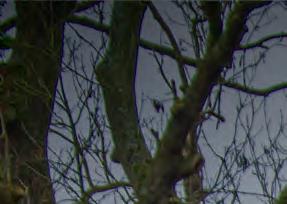
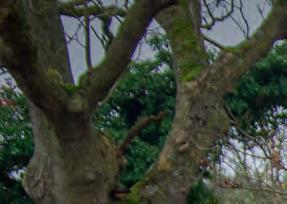











With Subaru’s new Forester now here in the UK and getting ready to inject fresh life into a brand that’s always been a firm favourite among real 4x4 drivers, you can expect to see a fresh new set of punters heading for the brand’s showrooms. When they get there, the Forester is unlikely to
disappoint them – though their attention may also be taken by the latest version of the original Subaru off-roader, the vehicle which invented the crossover estate market.
The Outback has been around since 1994, when it was known as the Legacy Outback. The names were split apart around a decade later, with the more rugged 4x4
estate model becoming the Outback while the Legacy continued as an everyday allwheel drive car. We’re not sure how many fully distinct generations it’s been through in total (six, if you believe Wikipedia) but the current version received its latest styling tweaks in late 2023, adding a more assertive look to its grille and wheelarches.
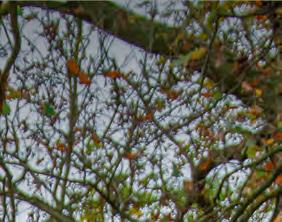
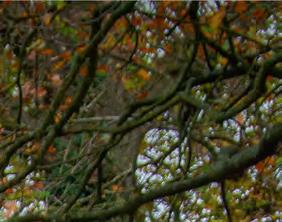



This helped the Outback remain Subaru’s highest selling model in the UK during 2024, with 31% of a total sales figure in the region of 2400 units. The now-replaced Forester was close behind on 29% (with the new version on sale you’d expect it to have pulled into a healthy lead by the end of 2025, naturally), with the Crosstrek (formerly



The Field model tested here has additional lower body cladding in black, as well as water-resistant artificial leather seats and heavy-duty tie-downs in the cargo area. This all adds to its general on and off-road usability, but all Outbacks are remarkably capable on rougher terrain than you’d think possible – nothing new for Subaru, of course, but it still always comes as a surprise that a mere estate car can get the places it does
The company says its intention is to grow the brand – but, unlike a certain other 4x4 specialist we all know, it wants to take its traditional customers along for the ride. Who are those customers? People who live in the countryside, typically, or who spend a lot of time there. Not so much people who spend a lot of time on the school run and want everyone else to think they’ve just had an idyllic weekend of kayaking, mountain biking, high-fiving and having great teeth. Or taking tea with elderly Berbers in a mountain-top tent in the High Atlas after driving across the Sahara to get there, for that matter. You buy a Subaru if day-to-day driving is a thing you do on rough, broken or loose roads and tracks; if mud is a thing that seeks you out rather than the other way round. If you want to go looking for extreme off-road fun, then yes of course a D-Max, Wrangler or Grenadier will get you further and amen to that – we all love a hero wagon. But what Subaru makes is real-world off-roaders for people with real-world offroad lives.
the XV) on 21% and the all-electric Solterra, whose numbers were capacity-constrained, making up the remaining 19%.
So there are currently four models in the company’s UK line-up. That will have climbed to six by the end of next year, thanks to the introduction of two new EVs, and 24 months after that it’ll be up to eight.
The Outback has been filling that brief for longer than most of these people have had their off-road lives. And it’s still doing it now. There are three models in the range – Limited, at £37,995; Field, at £41,005; and Touring, at £43,995. All are very well equipped but the Field and Touring get

a few extra goodies like leather, sat-nav, power tailgate and a heated wheel. The Field adds outdoor practicality features like water-repellant seats and black lower body cladding, while Touring pampers you with a power sunroof, nappa leather and an upgraded stereo.
You also get a surround-view monitor in the Touring, but that apart every item of safety equipment is standard across the range. And with adaptive cruise, dual-zone climate, heated seats, reversing camera and so on also fitted on every model, as well as an 11.6” tablet-style infotainment system with DAB, Bluetooth and wireless phone pairing, you’re not short of toys.
All models have the same drivetrain, too, a 2.5-litre petrol unit with the boxer layout Subaru has favoured for many years. It puts out 169bhp and 186lbf.ft and gets the
Outback to 62mph in 10.2 seconds, so it’s not fast and at 32.8mpg combined it’s not exactly frugal, either – however its standard auto box sends drive to all four wheels all the time and whether you’re pushing it on a twisty B-road or keeping it steady on a loose or muddy surface, it’s one of the most naturally tractable vehicles around. It’s also eye-poppingly capable in genuine off-road conditions – no, not in Wrangler territory but far beyond what you’d believe possible in a crossover estate.
As the above may suggest, everything that makes the Outback great is common to all three models. With a three-grand price walk between each of them, that points to the Limited being the one to go for – the added poshness does sit well in the Touring, and we’re all for the practical off-road intent built in to the Field, but whether either

The cabin doesn’t try to flatter you with its modernity – but it certainly does look after you. It’s very comfortable and extremely spacious, and build quality is top-drawer. These are the water-resistant leather seats in the Field model; Limited gets fabric, while Touring gives you nappa leather
justifies a price hike of coming on for 10% is less clear.
That’s for buyers to decide, of course. So instead let’s concentrate on why the Outback has remained a class champion in our 4x4 of the Year awards.
For starters, it might not be fast but that drivetrain is beautifully refined. The pull is smooth, linear and assured, with no vibration or lack of composure to be seen. There’s a muted snarl from the engine when you push it, but it doesn’t goad you the way some of Subaru’s previous boxers have been known to – this is a car for relaxing in and enjoying the ride, secure in the knowledge that nothing’s going to get in the way. With 183mm of ground clearance and a decent bit of stroke to the suspension, this includes relatively rough off-road terrain –though between the all-wheel drive system



Rear seats have plenty of knee and head room – the Outback will take four six-footers with ease. They fold down to lie a few degrees off flat, giving you a huge luggage space – though even when they’re up, you’ll still get a huge load in there
and a masterful choice of spring and damper settings, this is never allowed to come through as body roll on faster corners. It’s well controlled and very sure footed.
Torque vectoring, which is standard across the range, clearly has a role to play here. So too does the most rigid chassis ever to go beneath an Outback (this extends to the front and rear subframes) and a steering set-up that’s been tuned for added response. It’s not rapier-like but it’s towards to that end of the spectrum – overall, the eternal compromises between comfort and agility are handled very well indeed, with solid positives in every area and nothing significant in the way of vices. It doesn’t turn pot holes into a form of penitence, which is about as good as you can hope for, and it makes motorway driving as serene an experience as the traffic around you will allow.
Inside, it’s either plain and dated or, if you prefer a glass-half-full approach to life and aren’t easily seduced by pointless gewgaws, unfussy and usable. Not to mention roomy – a quartet of hefty six-footers can share the cabin with plenty of space to stretch out into – and, in true Subaru fashion, very well made indeed. The luggage space behind the rear seats is huge, too – and when you fold them flat, it’s like a hangar on wheels. Up front, the dash is dominated by the aforementioned 11.6” infotainment screen, which is bright, clearly laid out and quick to respond. Base models don’t have sat-nav built in, but most people now use their smartphones for everything anyway and the pairing software works well, giving you your choice of apps for navigation, music and so on. Subaru has managed to avoid
the lure of a zen-like facia with a jangling mess of virtual buttons hidden behind it in a rat’s nest of menus; there are some vehicle functions controlled via the screen but by and large, they’ve got the balance between this and simple usability pretty much right. When you’ve got to go tunnelling into a rock face of menus just to open the glovebox, for example, you know you’re on the wrong side of the looking glass, but things like the stereo volume and heating controls are at your literal fingertips – as of course is all the usual stuff on the steering wheel.
On an even more basic level, the seats are good and comfortable, with plenty of adjustment and excellent lumbar support to help keep you fresh. You get a good view out that’s not high-command but certainly places you above the great unwashed in their everyday cars, and everything’s to hand and within reach. This adds further to your ability to relax, of course.
The one thing we wouldn’t find very relaxing is that fuel consumption figure. Nonetheless, though, the Outback is a vehicle whose overall running costs should be low considering what it is. Build quality is rock solid, so long-term reliability can be expected to be top-drawer – and once a Subaru owner, you tend to stay one. The company’s brand retention is the envy of the industry – so if you don’t mind swallowing the pain at the pumps, over the piece you’ll find this a very pleasing vehicle to own.
And that’s certainly the case with everything about driving and using it. The Outback invented the crossover, it saw off rivals from Audi, Volvo, Skoda, Vauxhall, Volkswagen and more and here it is still showing the world how effective a 4x4 estate can be. You might go in to a Subaru showroom to look at the new Forester – but don’t be surprised if you come out with the Old Faithful instead.












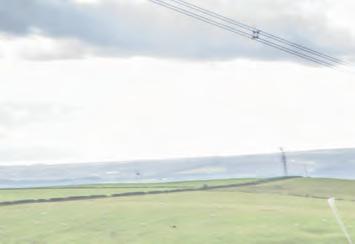















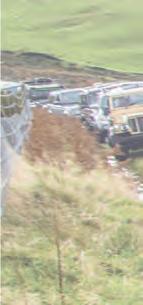













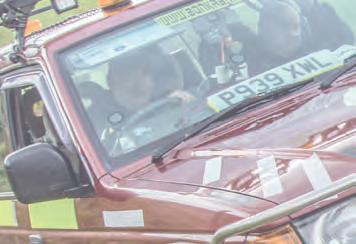












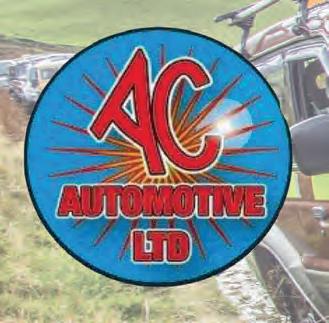















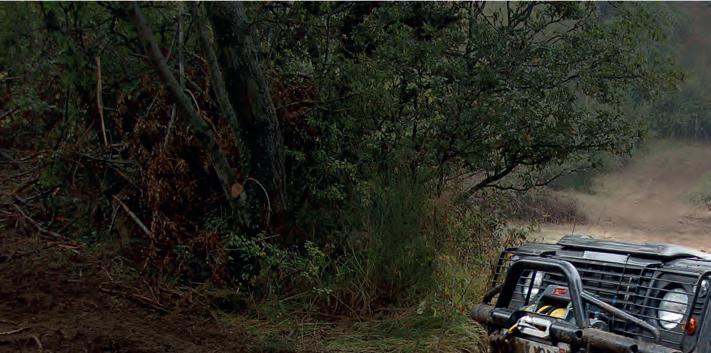







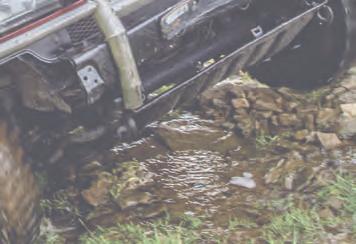










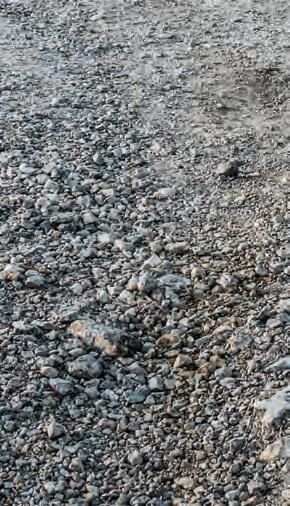


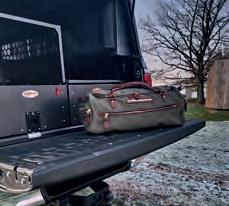


• Escape Gear
• ...and many more!
• Aluminium canopies
• Roof tents and roof racks




• Off-road fridges and 12v gear
• Drawer systems and slides














• Bumpers, side steps and vehicle protection
• Campsite essentials, tables and chairs



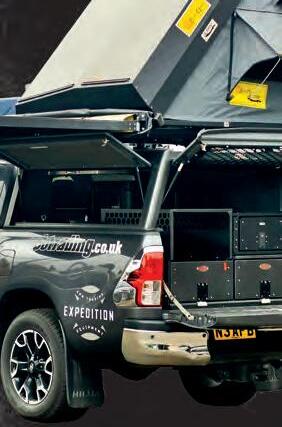












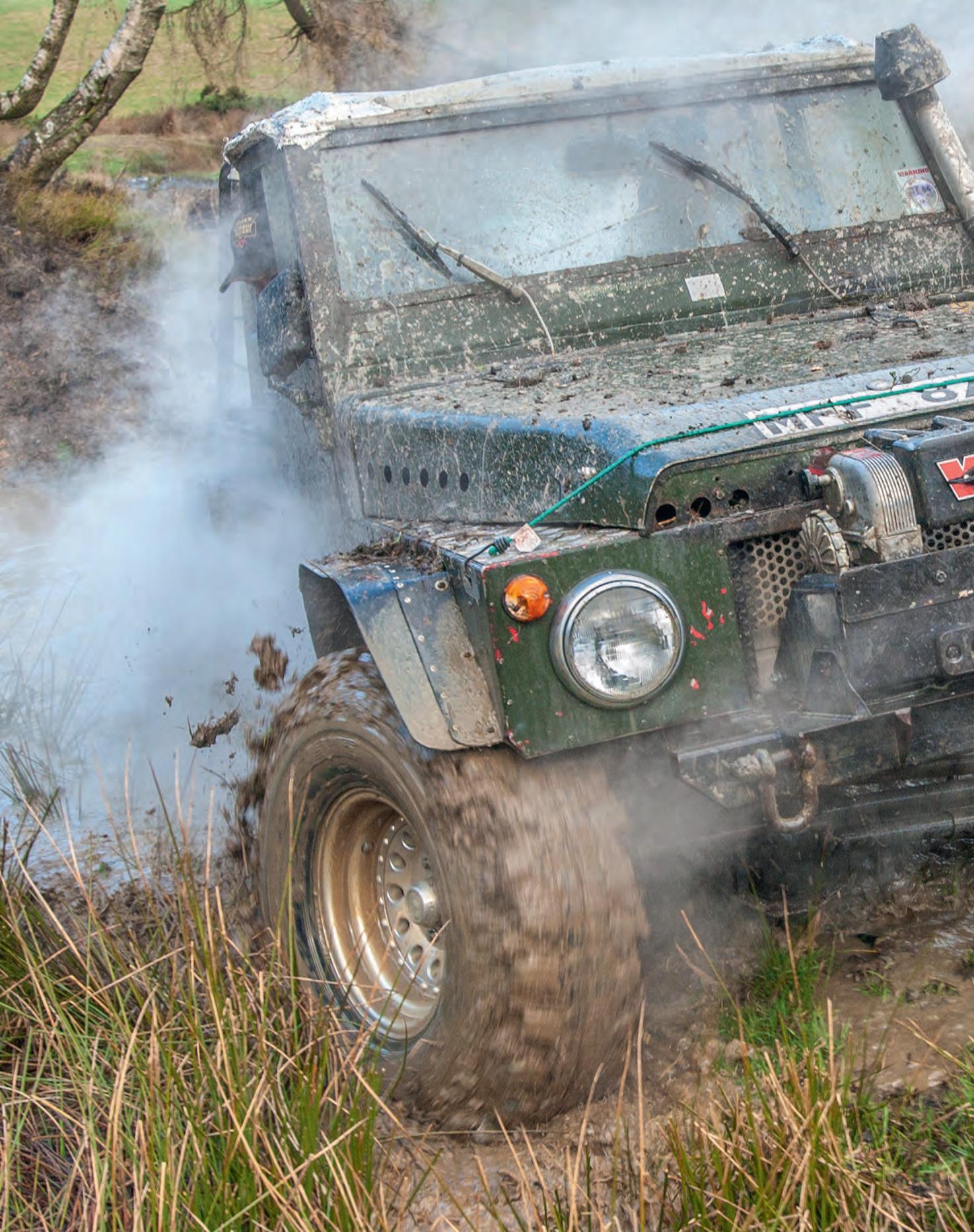












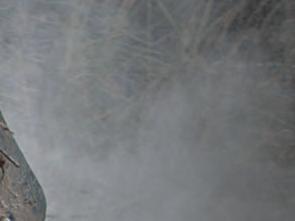













TIn the early days of competitive winching, Lee Bond was renowned for his use of Mercedes G-wagen axles to create manoeuvrable and super-strong vehicles. And unlike some builders, each of his creations was unique
Words Gary Noskill Pictures Steve Taylor



here was a time, and what a happy, innocent time it was, when building hybrid Land Rovers was all the rage. People who couldn’t afford a 90, which was more or less all of them, would take a Range Rover chassis (because back then you could afford that), cut it down to whatever wheelbase they wanted (normally 88” or, for trialling, 80”), replace the rear overhang with a Series crossmember and cobble together a body out of whatever panels they could get their hands on.
Those were the halcyon days before the SVA test came along to turn hybrid building into yet another Thing You’re Not Allowed To Do In Britain Any More. Mainly, though, the hybrid era came to its own natural end simply because 90s and 110s came down in price to the point where building your own was no longer necessary.











The Mercedes G-Wagen is every inch an off-roading legend, thanks in no small part to the colossal strength of its axles. As well as being designed to take the shock loads a 6.0-litre 12-pot is capable of dishing out while trying to shift two and a half tonnes on the sort of terrain where only live axles will do, they’re equipped with hydraulic diff locks at both ends. Add in a 4.88:1 ring and pinion and you’ve got something that ticks every box. Fitting them wasn’t as straightforward as it might have been, though – for one thing, the Mitsubishi chassis was built for inboard springs, and for another the two axles turned out to rotate in opposite directions when they were fitted
That was when people started modifying Defenders instead, and of course this has gone on to be at the heart of the Land Rover game ever since. A few hybrids and bitsas did still get built, but normally only by people looking for a 100” Defender or some other specific vehicle that couldn’t be achieved any other way.
Where does the Lightweight you see here fit in to all this? It was built at a time, about twenty years ago, when most of the top competitors in the winch game were in a race to build bigger, better 90s. But the man behind it, Lee Bond, saw another way.
Lee wanted to build something that was like a 90, but lighter. Like a Lightweight,
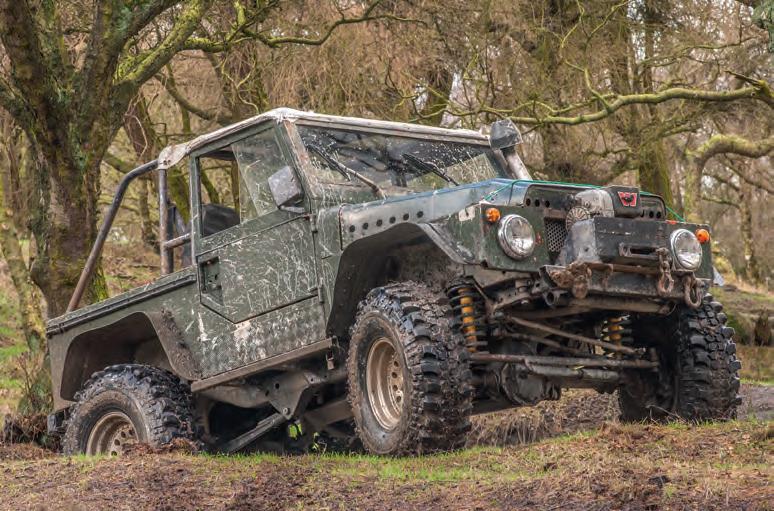
right? Well, sort of. Though in fact, the only part of his truck that actually came from a genuine Lightweight was its bonnet. He fabricated the other body panels out of aluminium, although he is happy to admit that he matched them for likeness to Land Rover designs. Look twice and you see it, but at first glance you probably thought you were looking at something which started out as a real Lightweight.
Actually, you’re looking at… a Mitsubishi Shogun. Cue outrage but yes, that’s where the vehicle’s chassis came from. ‘I chose the Shogun for its lightness and strong construction, and it made sense to go for a short-wheelbase because I was intending to cut it down anyway,’ Lee told us.
And what did he cut it down to? Yes, 80”. Now, where have we heard that one before? Challenge trucks do have to carry a fair bit of kit, not least among which is an enormous spare wheel, but manoeuvrability matters too and being the same length as an original Series I gave it a real edge in certain situations.
So we have a Land Rover bonnet and a Mitsubishi chassis, and next comes a pair

Hard as it is to believe, this would count as a small tyre by today’s standards. The challenge scene was still growing when Lee built his Lightweight, however, and a 35” Simex Extreme Trekker was cutting edge stuff back then. So too was having a winch on the back as well as the front –nowadays, it’s normal to have three or even four on your vehicle, but simplicity ruled back then and guess what? People had just as much fun as they do now
of axles from a Mercedes G-Wagen. If you’re an ALRC scrutineer, maybe grab a stiff drink but do stick with us, because the worst will soon be over.
Those axles are renowned for their strength. They’re built to cope with the weight of a G-Wagen, after all, and there are entire continental land masses that struggle to do that.
They’re also renowned for being fitted with hydraulic diff locks as standard, as well as a 4.88:1 ring and pinion ratio. Lee wanted hydraulic lockers for their dependability, and when you’re going to be running 35” tyres it certainly helps to start out with the lowest possible overall gearing.
‘Fitting the axles was a bit of a job,’ Lee admits. ‘When I first installed them, they rotated in different directions, which was a cause of some consternation!’ Fortunately, this is a man who absolutely loves his workshop time, so doing the machining to let him turn one diff through 180 degrees was pure pleasure.
Lee built the whole thing in a single garage outside his house. ‘I’ve done all the work on the truck myself,’ he told us, ‘and it has been designed to my own specification.’ As always, building a vehicle is also the best possible way of knowing it inside-out.
The bodywork, such as it is, consists mainly of a tubular exo cage welded directly to the chassis. Obviously, a cage is there for

AROUND THE SAME TIME THAT LEE BOND BUILT HIS LIGHTWEIGHT LOOKALIKE, he was also teaming up with Steve Lloyd in a bid to take on the best in the nascent winching scene. The partnership first yielded a Defender 90 and then, a
year or two later, what could be described as the first of the super-Jimnys.
This too rode on a pair of axles from a G-Wagen. It also had a bigger engine than standard – though this time, instead of a Rover V8 Lee went for a 2.8-litre Ford V6.

This is a journeyman among engines, having been used in a string of Fords including the Zephyr, Capri and Transit, as well as the AC ME, Reliant Scimitar, TVR Tuscan and, would you believe, Chitty Chitty Bang Bang. The version in the Jimny was warmed
up by twin Zenith carburettors and shared its space beneath the bonnet with a pair of Optima Yellow-Top batteries.
Behind the engine, Lee fitted a threespeed auto box from a Mercedes S-Class limousine. This then turned a standard


transfer case – though by the time we took our pictures of the vehicle, a subsequent owner had replaced it with a Rock Lobster, using Suzuki SJ internals to drop the overall gearing to the point where the vehicle could truly crawl in low range without any need for clutch slip.
Those two Optimas were there to supply juice to a Warn 8274 winch up front and a Superwinch X9 at the back. Both are mounted on bespoke platforms fixed directly to the chassis, while steel bumpers and rock sliders are integrated into an exo roll cage which, in addition to its obvious purpose as a safety backstop, is a primary source of manoeuvrability as it allows the vehicle to pivot against trees.
Mainly, though, the job of covering ground was trusted to those G-Wagen axles. These were attached using a threelink suspension set-up with cranked outer radius arms, long-travel Pro-Comp shocks and a central arm with a leading rose joint, allowing them to pivot through an unlimited range of travel. On the ends of the axles, 35x11.50R15 Simex Extreme Trekkers provided a dominant combination of height and grip.
Which is indicative of the sheer size built in to this Jimny. Tall and wide like a proper big off-roader, and short like the most hardcore of competition cars, it was more giant than giant-killer. Yet with the dinky proportions of its original body still showing, somehow it managed to hide that and simply look like a Jimny but chunkier. After you’ve seen Lee’s Lightweight, however, that’s no surprise at all.
Power comes from a blueprinted 4.0-litre Rover V8 with twin carbs and a 10:1 compression ratio. The wheels it turns are custom jobs made by Raceways
protection when the inevitable happens (and inevitable is the word when you’re talking about winch challenges), but a structure like this means you can be bashing it up against trees all day long and the worst you’ll need to do afterwards is touch up a little paint.
Since we’re on the subject, sort of, the winches Lee bolted to his truck were a Warn 8274 at the front and a Superwinch X9 at the rear. And if there’s anything that dates this story, it’s that. No twin-top motors, no outsize drums, no air freespools, no motor brakes… not even synthetic rope! ‘I prefer steel cable,’ Lee told us. ‘I find the wire easier to handle.’ That thing that just landed on the top of your foot is your jaw.
So anyway, we’ve made it this far in already and the only Land Rover item we’ve seen so far is a bonnet. But things are about to improve for spotters of all things green and oval. After trying a variety of engines, Lee settled on a blueprinted 4.0-litre Rover V8 running twin carbs and a 10:1 compression ratio. ‘I can’t think why any regular challenge competitor would choose a diesel over a V8 nowadays,’ he commented. ‘The power is incomparable, and most events don’t seem to have that much deep water any more.’
We’ve seen stuff in the intervening years which suggests that event organisers may have taken this comment as a bit of a challenge, but even without his home-made snorkel Lee said he found that the V8 coped pretty well with water.
The engine’s power is transmitted to the axles via a three-speed Ashcroft-built auto, behind which is a Series IIA transfer case. There was a time when no self-respecting red-blooded off-roader would be seen dead driving a self-shifter, but then you discover how much easier life can be with both hands on the wheel, and how much better it makes a truck at climbing hills and next step, you’re a convert. And with a big V8 spinning a set of 35x10.50R15 Simex Extreme Trekkers, grip is not a thing you lack.
If you look closely at the 15” wheels upon which the tyres are mounted, you may notice they are unique. Lee commissioned them from Raceways at Castle Donington,

having found it hard to source aftermarket Mercedes wheels. ‘They don’t look that unusual when you glance at them,’ he said, ‘but it’s nice to know that even the rims on this vehicle are out of the ordinary.’
This sentiment sums up Lee’s attitude to the truck. Taken individually, none of the components would be anything other than the bits and pieces that combine to make an off-road vehicle. But when you put them all together, you have a Land Rover (and yes, dammit, it is a Land Rover we see when we look at it) that will almost certainly never be replicated.
Take the suspension, for example. This holds the vehicle up on Range Rover springs from Old Man Emu – but no way is it as simple as that. To fit them, Lee had to cut the chassis so they could be accommodated without getting in the way of the diffs.
‘Shogun springs are mounted inboard,’ he explains, ‘so I needed to find a way of overcoming this without altering the shape of the chassis, which gets wider at the back to improve stability.’ Sounds like a nightmare of a job, but it paid off – and with their three-link location, which needless to say
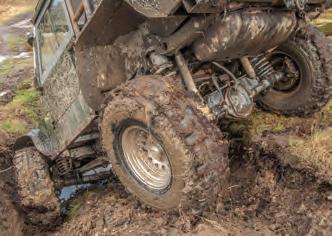
Lee designed himself, you’re looking at nine inches of travel at the front and sixteen at the back.
When we spoke to Lee, he estimated that he had spent upwards of £20,000 on getting the Lightweight to the point it was at when we took these photos. And that’s with doing all his own spannering and fabrication.
‘Ridiculous,’ he said, but he got a ridiculously good truck out of it so maybe not so much.
Anyway, there’s no such thing as a project that doesn’t suck up more time and money than you ever thought possible. Lee was not the first to discover this, and he certainly wasn’t the last.
In fact, there’s a whole generation of hybrid builders who now look back with nostalgia at the time when a whole section of their lives disappeared into the black hole of a workshop. The rewards were there, in the shape of some wonderful trucks that helped shape the off-roading scene in the 1990s, but little did those Landy men of old realise just how much of a hybrid a hybrid could be. It might not be a Land Rover at all in some people’s eyes – but as far as we’re concerned, this sort-of Lightweight was a hero of its time.

ALL LAND ROVER VEHICLES 1948 - 2025
ALL RANGE ROVER VEHICLES 1974 - 2025



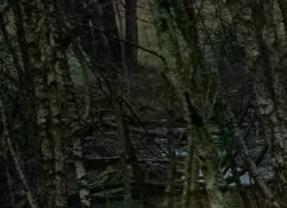










If you’re going to buy a 4x4 with its guts removed, you’d better know what you’re doing. Which was exactly the case with Richard Alder when he took on this Jeep Wrangler YJ and resolved to revive it with the engine from an Isuzu Trooper – and a gearbox that’s an engineering work of art







When Richard Alder went out and bought a Jeep Wrangler with no engine or gearbox, things could have gone badly wrong very easily. In fact, but for a simple twist of fate this tidy little YJ could have been lost altogether to the world of off-roading.

A 1990 left-hooker, which came to the UK in 1992, the Jeep now sits proudly on a businesslike suspension lift, with some of the best bumpers in the world looking after its vital interests. But it could so easily have been so different.
‘I started off by looking for chrome stuff bumpers and so on,’ admits Richard. ‘That

was the way I meant to take it. But then I saw these new heavy-duty bumpers on Smittybilt’s website, and I thought they looked the business. So I decided to do it that way instead.’
That makes it sound as if he didn’t know his own mind, but nothing could be further from the truth. He was no newcomer to












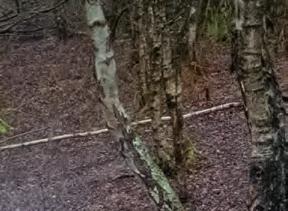



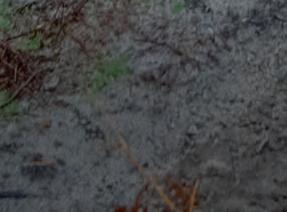

Jeeps, either, having previously owned another YJ and couple of CJs. ‘The YJ was the one I regretted selling,’ he says. ‘So I set out to recreate it.’
In doing so, he actually bought two Wranglers. Well, if a thing’s worth doing, it’s worth doing right. There was this one and a 2.5 model, which he took on to rob for

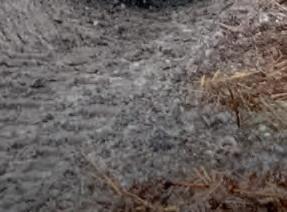
parts – principally its gearbox, for which he had plans.
These were plans of the workshop variety. And we all like those. That’s because the engine Richard had in mind wasn’t going to be anything you normally see in a Jeep. No, it was going to be something you normally see in… an Isuzu Trooper.

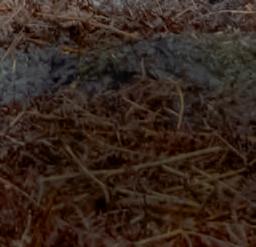

Or a Vauxhall Monterey, if you want to be pedantic about it, and when did you last see one of those on the road? In fact, when did you last see an Isuzu Trooper on the road?
The engine Richard fitted is the 4JG2, a 3059cc indirect-injection unit producing 113bhp and 192lbf.ft. It went into the Mk2 Trooper – that is, a good old one from while




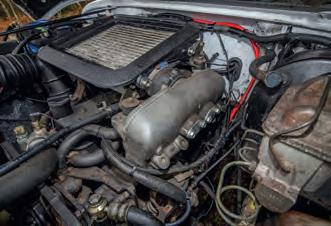
Main pic: The 3059cc 4JG2 turbo-diesel from Isuzu is a strong, torquey and reliable engine for sure, and who wouldn’t want one? It’s just that dropping it into a YJ would be a step too far for most people. With his professional knowledge of gearbox building, though, Richard is not most people…
Top right: The Isuzu engine has a top-mounted intercooler, which is handy as it’s one less thing to pick up mud at the front of the vehicle. More to the point, it’s the perfect excuse to cut a funky power scoop out of the bonnet
Above right: Where there’s a diesel, there’s an EGR removed. It’s the law
Below left: The engine installation required a surprisingly small amount of custom bracketry – this is one that Richard did need to make, to hold the fuel filter and PAS reservoir
Below centre: The rad is an alloy unit from Northern Factory Radiators, designed specifically for the YJ but intended to be used with smallblock Chevy instals. Thus it slots into place without an issue, and an advantage is that its hose points are already on the correct side for the Isuzu engine. The top hose is from the 2.5-litre petrol engine in the Wrangler Richard stripped for parts – all he needed to do was shave 0.25” of length off it and it went on perfectly
Below right: Not all 3.1 Isuzu engines ran twin batteries, but this one did and Richard thought better of messing around with it. The electric system is 12-volt from top to toe, so there’s plenty of backup here. In front of them, the airbox and intake hood are Isuzu’s own, though the latter has been modified to fit in the space available in the Wrangler’s engine bay

the vehicle still had a reputation as one of the most dependable 4x4s on the market.
Ask any Trooper fan and he’ll tell you that the 3.1TD is the engine to have. And it’s the engine Richard has, so he’s happy. He’d be less so, however, if he wasn’t a bit of a whizz with gearboxes (his company, Alders Automotive, is a leading transmission specialist in the American car scene), because it’s within the standard-looking

outer casing of the five-speed manual from the 2.5 donor car that Isuzu becomes Jeep.
The story here starts with a later Trooper, the feared 3.0DT. Not with the engine, happily, which is what put such a dent in Isuzu’s aforementioned good name back then, but with its gearbox. This is an AISIN Warner unit – which, Richard found, is very similar to the AX15 5-speed manual used by Jeep throughout the 90s.
Simply using an entire Isuzu transmission wasn’t going to work, as the

front output was on the wrong side for the Jeep’s diff (it’s been tried before, apparently, the result being a front axle that looked like something you’d trip over on board a dredger). But with the two boxes being so similar, he cooked up a plan to mix and match parts to create a one-off with an Isuzu input and Jeep output that would fit on the original mountings.
‘After a lot of cross-referencing,’ explains Richard, ‘we were able to build a hybrid box. The box has been used in a lot of different









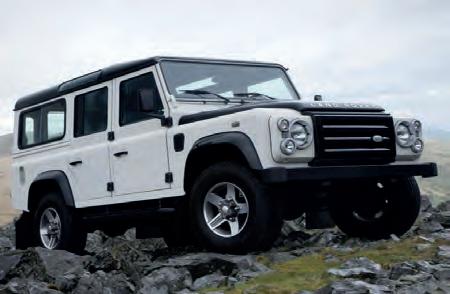





































4x4s, even some of the Toyota Supras had it, and the part numbers aren’t always the same, so we had to do a lot of checking one with another, but we managed to do it with no custom parts, just by mixing Jeep and Isuzu.’
Yes, you heard that right: no custom parts. That’s quite a thought. The way it works is that the box is turned by an Isuzu clutch and input shaft – there was no room for hybridising here, as Jeep and Isuzu applications were splined differently. The
Trooper’s 3.1 engine used an adaptor plate as standard, so Richard machined a new one to suit the 3.0 bellhousing. Beyond the input shaft is where you get into the two-nation army of painstakingly matchedup internals, and by the time you reach the output end it’s all Jeep.
Thus you have the entire transmission on its original mounts but ready to be driven by an engine it’s fair to say nobody at Jeep would ever have envisaged ending up there. If they had, they’d probably have sold about
On the back of the transfer box is a slipyoke eliminator from Advance Adaptors. With the extra lift, the standard rear prop would be working at a 5º pinion angle –enough to get it binding and sent a constant vibration through the vehicle. Removing the slip yoke shortens the tranny output, allowing you to run a double-cardon UJ at one end and decreasing the prop angle to the point where it’s once again happy. The plate beneath the transfer case looks for all the world like an aftermarket one, but actually it was there as standard on the YJ
10,000% more YJs in Europe than they ever did, but that’s another story.
At the sharp end of the drivetrain, the 2.5 donor vehicle had its final hurrah by supplying its diffs – thus giving the Jeep a 4.1:1 ratio which suits its bigger tyres (255/85R16 BFG Mud-Terrains on Pro-Comp Xtreme alloys, since you ask) down to the ground. More good stuff here comes from the fact that the donor truck also had a

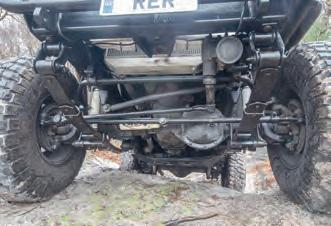


Above left, centre: It’s the standard Dana 30 up front, holding the vehicle up on +2.5” Rough Country springs. If you think the pitman arm on the steering box looks rather long, you’d be right - it’s extended to match the lift, and Richard says every trace of the slight bump-steer he got after fitting the new suspension is now gone. The box doesn’t have any extra bracing to keep it from being moved by the feedback from the steering - that can cause untold trouble on trucks with big lifts, but this much extra height doesn’t seem to be pushing it beyond the limits of its tolerance
Above right: Same deal at the back with the standard Dana axle and Rough Country springs. There’s no clever tricks going on with revolver shackled and the like to coax more flex out of the vehicle, just an extra 2.5” of arch to make room for taller tyres
limited-slip diff in the back: it won’t shock you to learn that this one has it now.
The axles hold the vehicle up by means of some higher-arch springs from Rough Country, which give it a lift of 2.5”. They’re connected using standard shackles –Richard hasn’t added any clever tricks to aid flex, at least not at this stage. But one mod
he has made is to fit a longer drop pitman arm from the power steering box. ‘I got a little bump steer after fitting the lift,’ he says, ‘so it seemed logical that if I extended the arm by the same amount, it would go away again. It seems to have worked, because now it sits perfectly on the motorway without a twitch.’
A popular mod when you’re building a Jeep of this vintage is to brace the steering box. The YJ’s steering was lighter than most British drivers like, but at least this means the box has plenty of power for turning bigger tyres – though if these have too much grip on the ground, for example if you’re stuck in deep ruts, there’s a danger
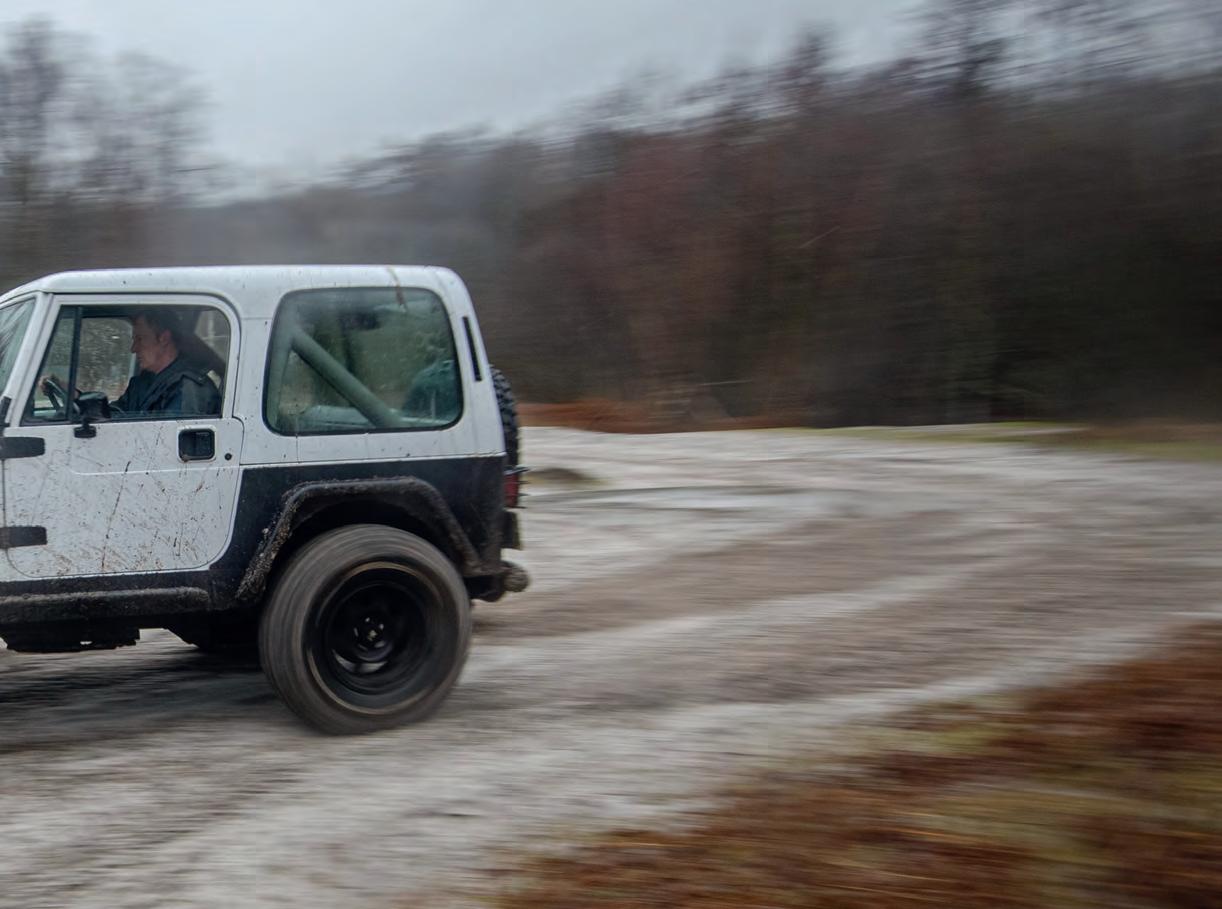


Richard went looking through the Smittybilt catalogue in search of chrome bits to build a pose truck. But then he saw what the company can do for people building a serious off-roader, and the project took a whole new direction. Tube is very much in evidence rather than plate. Keeps the weight down when the sort of terrain you’re protecting against is characterised by massive slabs of rock. In addition to the redoubtable front and rear bumpers, the tubular wings look the absolute business and somehow manage it while still retaining an element of subtlety – while the rock sliders and rear arches are designed with places like Moab in mind, meaning there’s nothing much in the world that’ll faze them
that they’ll just stay still while the box tries to rip itself off its mountings. Not necessary in this case, though, as far as Richard can tell; this combination of lift and tyres is modest enough by the standards of what people sometimes do to their Jeeps, and it doesn’t seem to send so much leverage back on to the box as to put it in danger.
As you might be able to spot in these pictures, Richard’s YJ was still a work in progress when we photographed it. The winch was looking a bit naked without a rope on it, for example (or even just a cable), and the U-bolts were wanting a bit of work with the hacksaw to trim them off closer to the axles. There was still enough sticking out down there to bring a vehicle to a shuddering halt in the right (or wrong) circumstances.
As works in progress go, however, most of the progress had already been made. Richard had reupholstered the seats and he told his next job was going to be to fit new gauges to make the YJ’s interior look a bit more modern. A reminder of the fact that however well he’s piloted the Jeep down
the road towards off-road stardom, first and foremost he wanted a nice everyday ride. That explains what you’ll find beneath the rear arches, too, which look a bit odd as you can clearly see the original bodywork beneath the add-on extensions Richard fitted. You’d assume it was meant to be cut away flush, which would certainly look better, but he didn’t want to do that on what was a daily driver rather than a deathand-hell off-roader. Lest we forget, this is a project that started off with chrome in


mind and only ended up like this because Smittybilt makes hardcore stuff too.
If that suggests a man who didn’t know his own mind, really it’s someone who sees the virtue in all kinds of good trucks. Richard was flexible as to how it was going to look – but so long as beauty is more than skin deep to you, this is a Jeep whose attraction lies in what’s happened down below. It could be more of an off-roader – but in terms of engineering and workshop ingenuity, this YJ has got to be one of the best in the country.
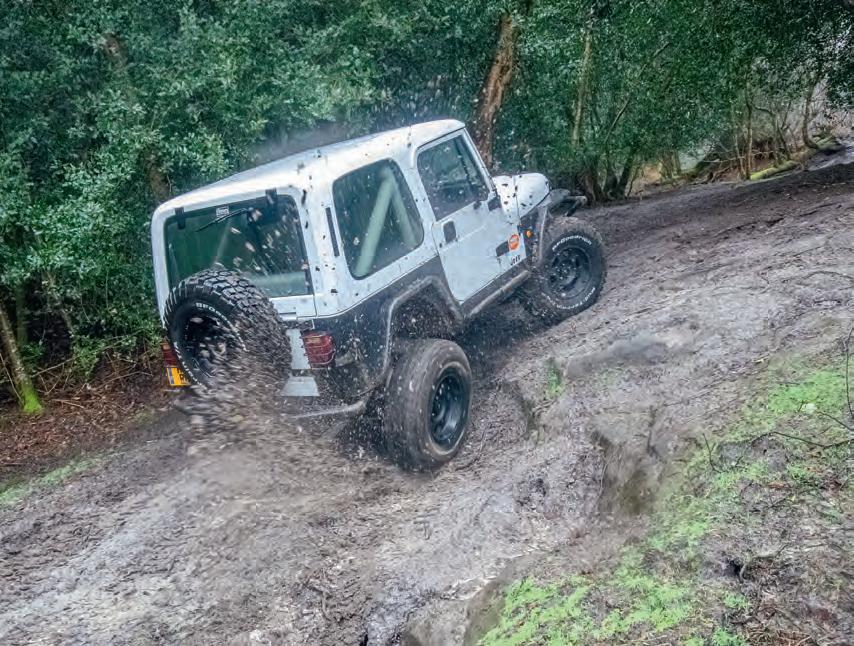


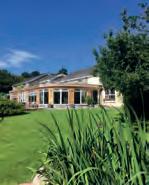
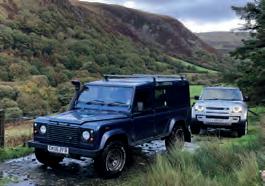


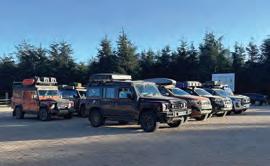













































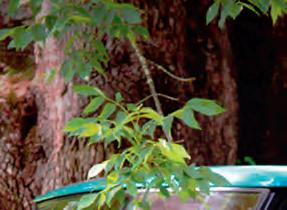



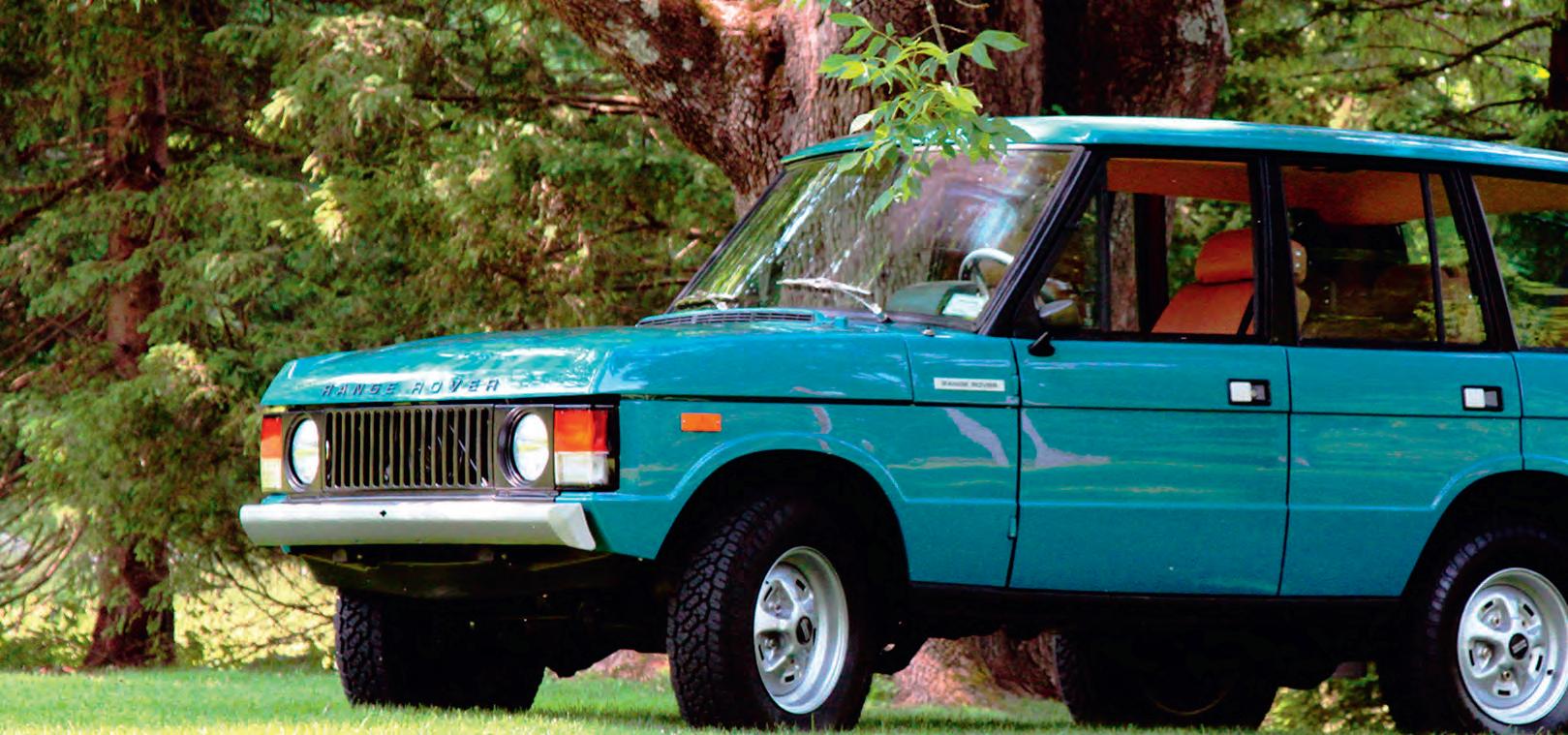



Project Bedford is an odd sort of name for a re-engineered Range Rover. But it’s a town of many talents – and this deceptively early looking four-door is not short of a trick or two itself
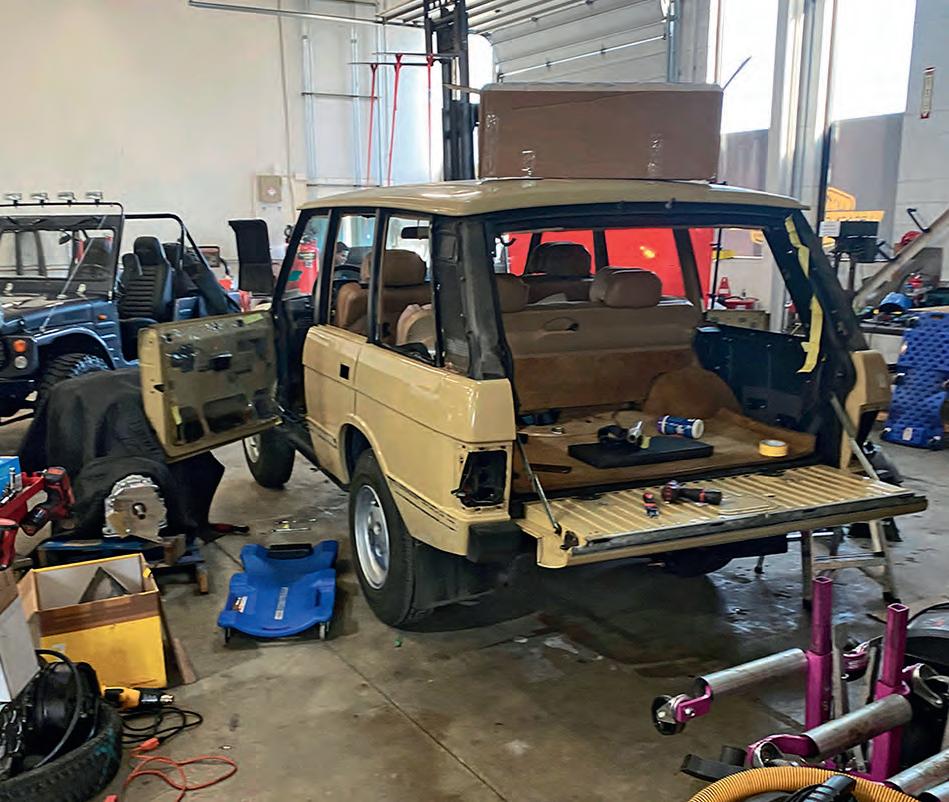


With some towns and cities, everybody knows what they’re there for. High Wycombe is all about chair making, for example. Burton on Trent is the nation’s brewing capital, Dover is the port for getting to France and both Crewe and Swindon flourished on the back of the railways. Grimsby? Fishing. London? Executions and corruption. And so it goes on.
But others are not so obvious. Like Bedford, for example. Yes, it’s the county town of Bedfordshire – but what’s it actually for? Aside from getting to the other side of the, er, river Bed, obviously.
The answer is lace-making. And wool. And then brewing. Which gave way to engineering. It’s had two castles, both of





Above, below left: The old V8 getting ready to say farewell. Looks like it may have been sat for a while…
Below right: And here’s its replacement. However much you love originality, this is a sight to stir the soul



them long gone courtesy first of marauding Danes and then of a marauding King Henry III, as well as a Great Fire (the Great Fire of Bedford, it was an actual thing – London’s may have been greater but this one meant business too) and an even greater flood. It’s one of those places that seem to have had a go at more or less everything – and put up with more or less anything. Oh yes, and one of the greatest off-road vehicles of all time, the magnificent piece of work that is the Bedford MK/MJ, is named after it.
That’s probably quite a contrived way of comparing it to a Range Rover. Or vice versa. But what better name for a vehicle that does whatever you ask and copes quietly with anything you care to throw at it, then makes you want to drive it across





There’s nothing much wrong with the original Rover V8 – it’s the engine upon which the Range Rover legend was born, after all. But the more the merrier, especially where horsepower is concerned, and the LS3 Chevy V8 has 420bhp so that’s that taken care of. As you can see, it means the old four-door now identifies as a Corvette and that’s the kind of lifestyle choice we can all understand
Africa? Bedford is a town of many talents – and, here, a Range Rover of even more talents than normal.
The folks at Legacy Overland always name their projects. This one was called Project Bedford – we don’t know why, though it almost certainly wasn’t anything to do with the number of different industries the town has hosted over the years. No
need to over-think it, in any case. Mainly, the vehicle is just a glorious example of what the company does.
of all, they’re built to the standards you’d expect of an OEM.



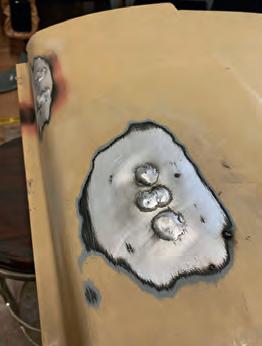

Which is what? You could call them restorers, but what they do goes a long way beyond that. The company takes old, traditionally made 4x4s, strips them all the way down and starts again from scratch, adding a combination of modern refinements and individual quirks as it goes. Its vehicles manage to be at once rooted in their past and resplendent in the glories of their new lives; most
Unusually, Legacy Overland doesn’t limit itself to working on one brand. We’ve featured its Range Rovers in the past, as well as 90s, Land Cruisers and G-Wagens. This variety says it’s not working to a formula, and that it bases every build on sound engineering rather than just bolting on the same old bits over and over again.




Having said that, Project Bedford does have something we’ve seen on a few of Legacy Overland’s vehicles before. If you know your industrial engines, you’ll know that the diesel sets in the Titanic were made in the town by WH Allen Ltd – which was later taken over by none other than Rolls-Royce. Not that it made the sort of unit you’d put in a car there, given that they were designed to go in oil-fired power stations.
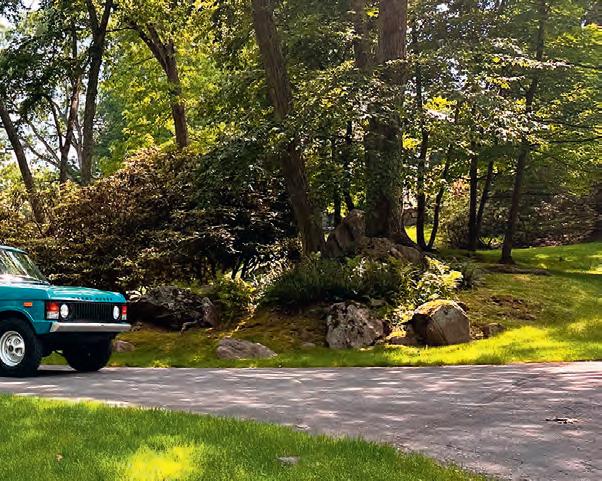


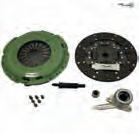





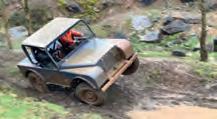





































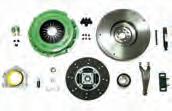
























































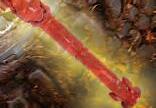
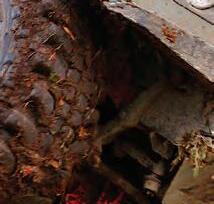











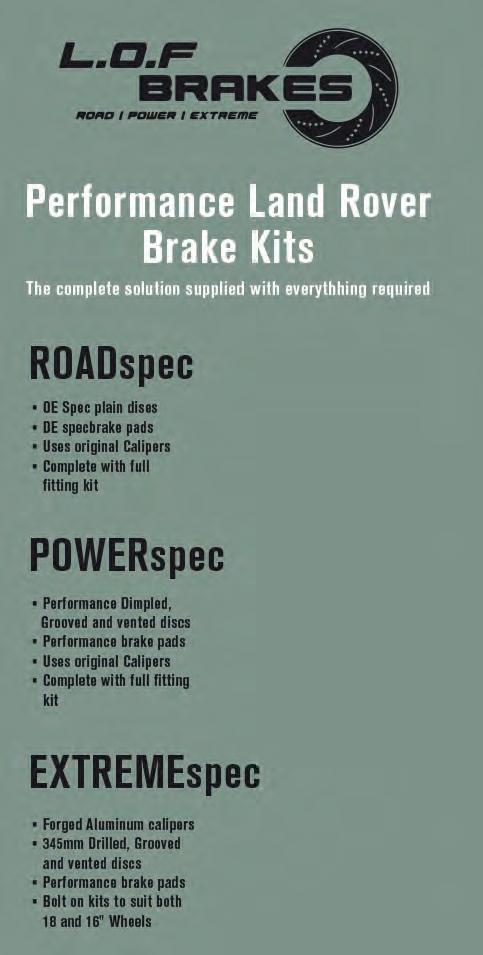
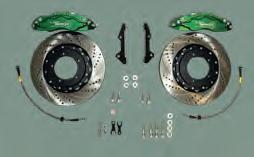






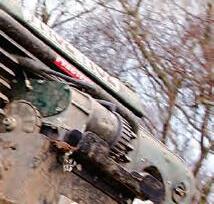
























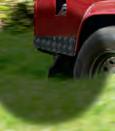
































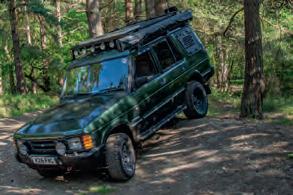







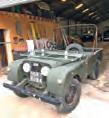































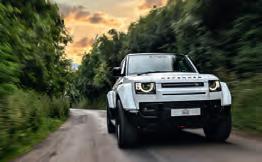
































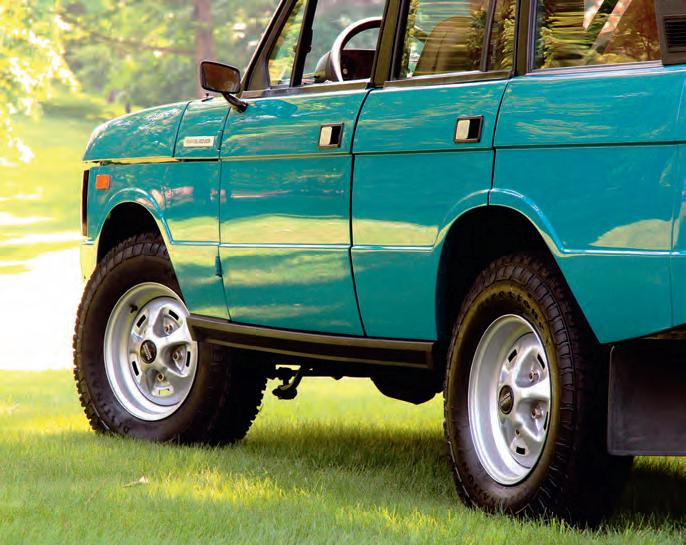
Above: Rostyles always look SO right on a first-generation Range Rover, especially when they’ve been refurbished, powder coated and wrapped in a crisp new set of 215/85R16 Firestone Destination X/Ts. Even so, when you see them on a four-door that looks like this there’s definite potential for a double-take
Right: The door handles that launched a thousand parts-bin jokes. When something is perfect, why would you change it?


So no, it’s not a Roller lump under the Rangey’s bonnet. It’s a 6.2-litre Chevy LS3. Much more American – and, with a sixspeed auto box behind it, ideally suited to the vehicle’s character.
Doing its thing via a rebuilt transfer case, the big V8 puts out 420bhp. A little more than the 3.5 Rover unit with which this 1984 four-door started out in life. You’ve got to dream big, though.
Look at it, though, and you wouldn’t immediately identify this as a Range Rover
that’s been hotted up. There’s clearly been a lot of love shown to it, but even with a custom paint job it still looks far more standard than it actually is. It’s a sleeper and no mistake.
Keeping with the standard-looking theme, the big LS lump turns a set of Rostyle steelies which the Legacy team restored and powder coated to give them a betterthan-new shine. The transfer box dishing
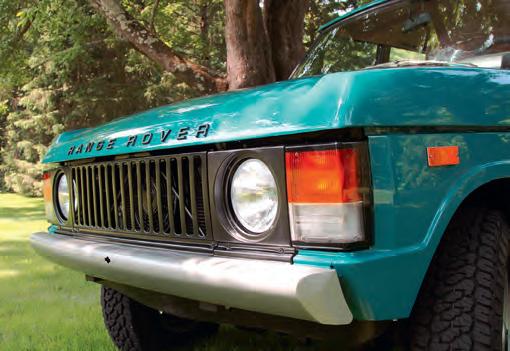
it out was rebuilt too, and a further nod to originality comes in the shape of an earlystyle front bumper. There are so many ways of making a Range Rover stand out from a crowd that it turns out the best way to do it is not to use any of them.
It’s similarly retrained inside, which isn’t to say a mountain of work didn’t go into making it as good as it now is. The seats and doors have been fully reupholstered in Palomino leather, and below them is a period-correct chocolate brown shag pile

Early-style bumpers take the truck’s image back to the 1970s, even though it’s actually an ’84. Legacy Overland are great at details but they believe in bringing their vehicles up to date too, so they stopped short of installing a pre-rusted lower tailgate and broken upper catch


Above: Period dash includes little hints at the modernity that’s been built in during the restoration. Legacy Overland wouldn’t let a vehicle out of their sight without giving it an aircon system worthy of its status
Below: Similarly, entertainment comes from a high-end Blaupunkt stereo with a sub, amp and multiple speakers in the doors. Well, entertainment comes from the engine and music comes from the stereo, but you get what we mean



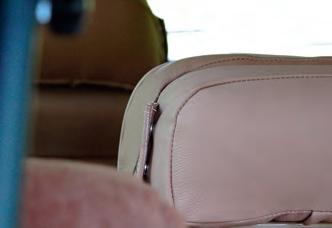



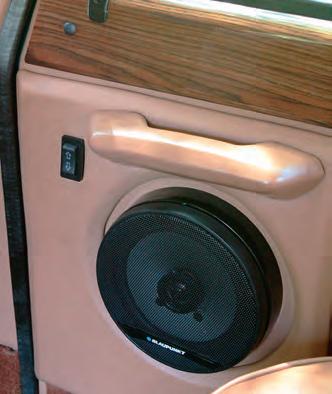


Above: Everywhere that there can be leather, there is leather. Well, within reason. The team chose Palomino for the seats and doors, not to mention the armrests, reproduction cubby box and so on
Below: Chocolate brown shag carpets provide a perfect complement to the lighter shade of hide
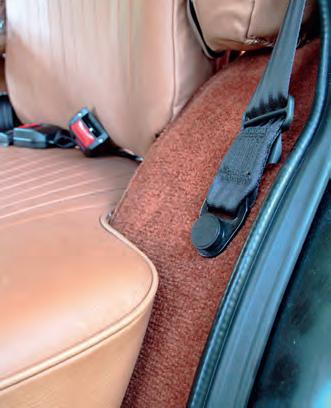
The typical Range Rover of this vintage will have wood inside it that’s faded, tired and dry as a bone. This one still has its original door trims – but they’ve been brought back to their best, and then some. A feature of the vehicle’s new interior is that many of the plastic parts, which would be hard to source and were more than a little susceptible to the ravages of time in the first place, have been remade in-house by 3D printing them
carpet set. The dash was fully restored too and the wood trim refinished – a specialist job in itself when you’re talking about actual wood, as opposed to plastic with a picture of some wood stuck to it.
Legacy Overland also designed and made a variety of 3D-printed finishers for use throughout the cabin; these include the bezels for a set of visible speakers, part of a Bluetooth-enabled Blaupunkt ICE rig that

make a statement all of their own. And an original-style cubby box was fabricated and installed, complete with a custom installation for power-operated windows whose switches live in 3D-printed housings. ‘For those days when the air conditioning is not needed,’ as they put it.
Another good thing about opening the windows is that you can hear the engine singing out better. Maybe mute the stereo

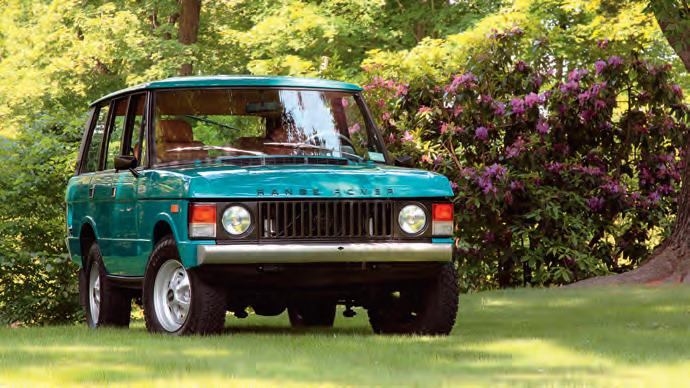


first though, because with a hidden sub and amp boosting its output even an LS3 at full chat might struggle to make its voice heard. The team gave it the full sound deadening works before installing the new interior, too, so you’ll hear the good stuff interrupted only by the bare minimum of unwanted noise.
Not that this is a Range Rover that needs to shout about itself. Quite the opposite, in fact. It’s a four-door that looks more like it dates from the days before such a thing existed – and while it’s clearly a very nice one indeed, it’s only when you get under its skin that you realise just how nice it actually is. ‘Why choose between modern and classic when you can have both?’ asks Legacy Overland – and if this is the answer, it’s a very good question.
























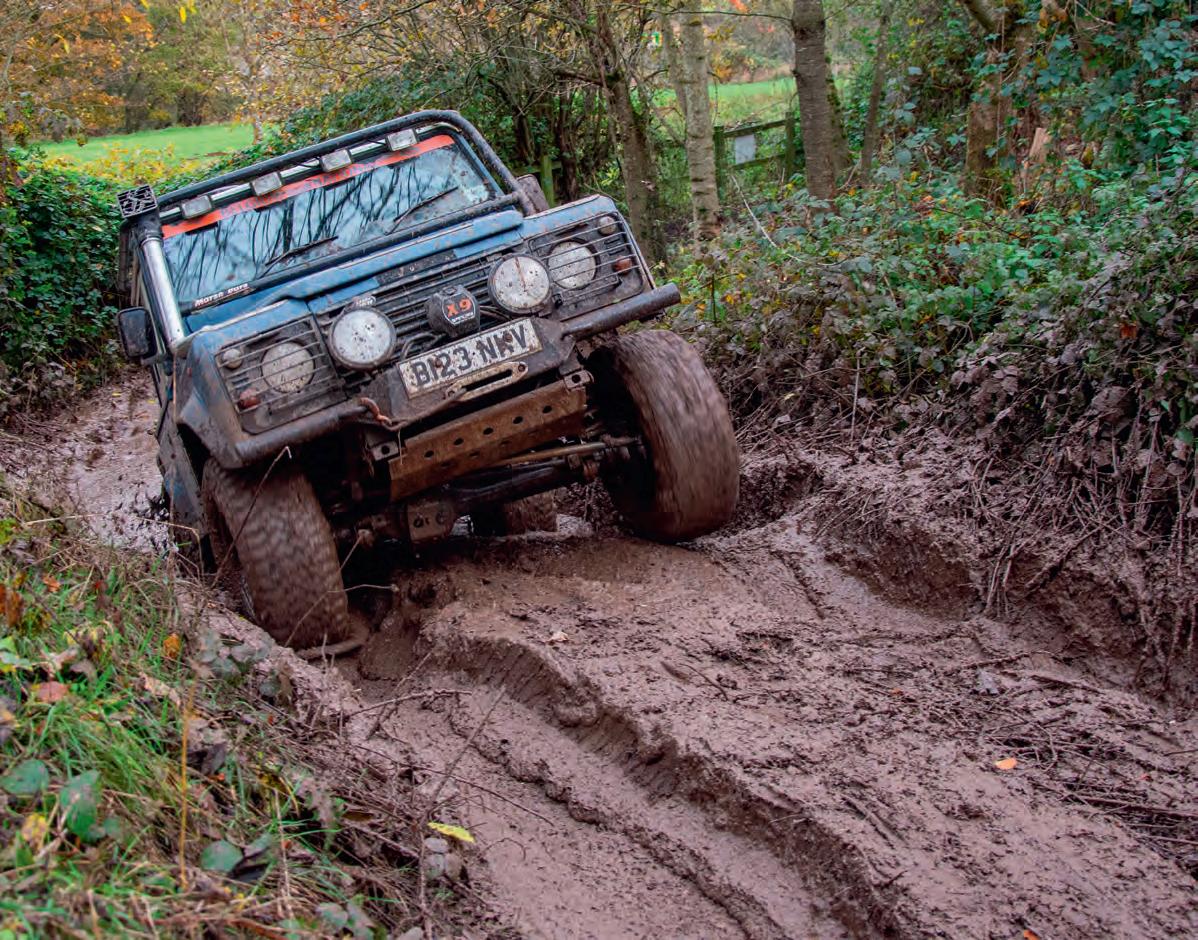


Land Rovers are returning to Bath & West this April for a weekend filled with Land Rovers!
Exhibitors old and new will join
selling everything from parts & accessories to tyres, clothing and toys Talk to overland adventure specialists about your next trip, discuss modification options with companies with the know-how and other experienced Land Rover owners.
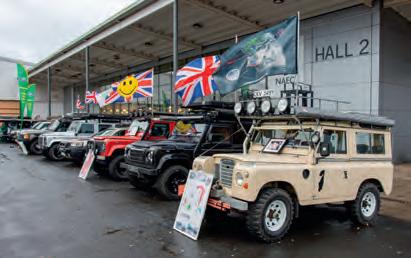

















Words and Pictures: Chris Collard



Tracing the tracks of the 19th Century pioneers who risked everything for the lure of the West on the Applegate-Lassen Overland Trail












“We stood on the edge of emptiness, staring across a scraggly expanse of sagebrush bounded by brown foothills peppered witfh black volcanic outcroppings. Some 100 miles to the west, the high peaks of the Sierra Nevada ascended nearly to the clouds, an ominous obstacle for man, beast or machine.


“Before us, the dirt road divided, offering two options. If we took the path to the left, beyond the evaporating vestiges of





the options, and turned the wheels toward the path less travelled – the ApplegateLassen Emigrant Trail.”

the Mary’s River (Humboldt), the dreaded 40-mile desert awaited. Its reputation as a barren and waterless wasteland was well documented. Many souls had perished in their attempt to reach its terminus, and it was rumoured that the pungent stench of dead and decaying oxen hung like a veil over its extent.



S“The trail to the right was less established; an unknown. But tales of reliable water and rich grasses were powerful persuaders, and it was rumoured to be a shorter and easier path to California. We took stock of our supplies, discussed


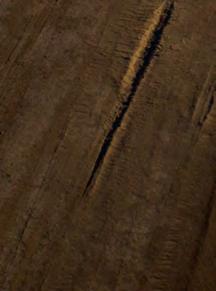
uch were the thoughts of our venerable predecessors, those who ventured away from the security of Eastern living and into the unknown. In search of free land and riches, everyday citizens packed their worldly possessions into wooden wagons and carts and set out to find a better life in America’s West.
Each year, as soon as grasses on the Great Plains were sufficient to support livestock, thousands of wagon trains would depart from locales such as Independence,




















“We started early and soon came to forks of the road. We took the right hand road, leading nearly due west, towards a gap on the mountain. The river and old road bore off to the south west.” Elijah Preston Howell, 1849
Missouri, for the Rocky Mountains. With a short window to clear the Sierra Nevada before the winter snows set in, it was often a life-or-death race to the finish. The fork in the road along the Mary’s River would decide the fate of many.
It was late summer, and we had joined Jeep Jamboree USA for their inaugural Applegate-Lassen Adventure, the first in a series of overland trips. Unfortunately, the Bureau of Land Management (BLM) declined their permit request, the trip was cancelled and registration fees were returned. So in the true spirit of adventure, the participants decided to go anyway. It was officially unofficial.

the Hastings Cutoff, which promised to shorten the journey by 350 miles.



Not only did the new route in fact turn out to be longer, it included terrain the party’s wagons could barely negotiate. Struggling desperately, the pioneers battled on until finally a massive eight-day snowstorm left them unable to continue. With little food and no more than basic shelter, they were stuck in the Rockies for winter; when help finally arrived the following November, the 87 had become 48 and many of those who survived had done so by resorting to cannibalism.
On 12 May 1846, a group of 87 emigrants including the extended family, plus employees, of George Donner, set out from Independence in a big to reach California. Their wagons were among the last of around 500 to attempt the journey that spring and, eager to make good progress, they decided to follow a newly advertised diversion from the Oregon Trail called





News of the tragedy spread fast. Soon, a clamour was growing for a less arduous route to be found to California and Oregon – neither of which was part of the United States at the time. The imperialist philosophy of Manifest Destiny, the belief that the US should control all of North America, was dependent on large numbers of settlers moving west, and many private citizens had cause to forge new corridors to their regions.


Jesse and Lindsay Applegate, prominent settlers from Willamette Valley, Oregon

Territory, who had each lost a son to the Colombia River during their migration along the Oregon Trail, were also determined to establish a safer route to the Northwest. Traveling south, the two brothers crossed Northern Nevada and eventually arrived at the Mary’s River and the intersection of the 40-mile Desert.



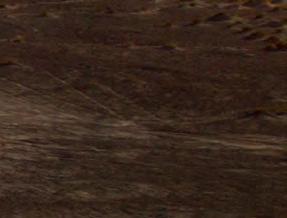


Danish emigrant Pete Lassen, who held a Mexican land grant in Northern California, also saw the value of enticing settlers to his region; settlers meant new leases and commerce. A few years later, his efforts tied in the Applegates’ trail across the Black Rock Desert with his ranch near the present-day town of Vina.
Lassen’s first attempt as a wagon master resulted in disaster when his group became mired in snow, ran out of provisions and nearly starved. Nonetheless, news of these new routes was snatched up by Eastern newspapers, always hungry for the latest scoop. Their reports regularly embellished upon fact and were laced with colourful metaphors painting auspicious pictures of adventure, independence and a land of




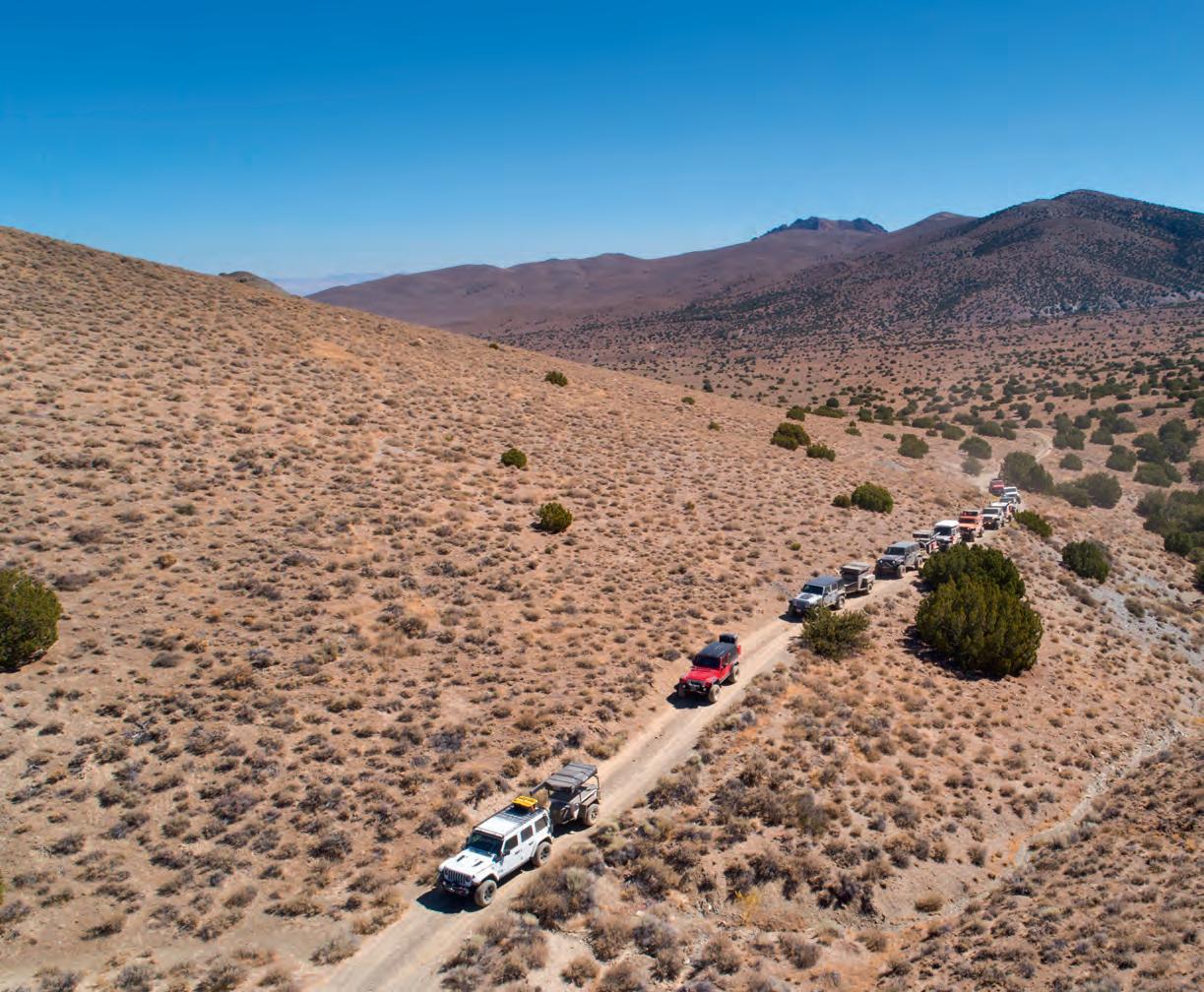
plenty – Lassen’s route actually added 200 miles for settlers bound for Sutter’s Fort (modern-day Sacramento).
When the pioneers of 1849 reached the Mary’s River, they were faced with a dilemma: turn left toward the 40-mile Desert or right into the unknown. Most chose the former, but on 11 August a group led by Milton McGee, an esteemed frontiersman who had read the reports of
ample grass and water on the ApplegateLassen, turned right; a decision which, like Donner’s three years previously, would go down in history as fateful. In follow-theleader fashion, succeeding wagon trains shadowed his tracks by the dozens.
Our Jeeps traced McGee’s path over Antelope Pass, where we stopped to read one of the signposts erected along the route by Trails West, an organisation dedicated to preserving this part of America’s history. Each is engraved with
journal entries from the pioneers. The entry on Antelope Pass confirmed that the first few trains found suitable grass and water – but as we ventured west toward Rabbithole Springs, the accounts began to paint a grim picture.
Over the years the spring has been excavated and there is now plenty of water in it: only coyotes, mustangs and rabbits depend on it today. But by late 1849, it had become but a muddy smudge with barely a trickle oozing up from the sand.
“Visited the springs to see what they look like by daylight. These were mere drippings percolating from small clay cliffs in the hollow slope of the mountain. Travelers had dug out hollow reservoirs below each spring, which filling enabled the animals to drink.”
J. Goldsborough Bruff, 1849

It is estimated that one third of all emigrants that year, roughly 9000 people, followed McGee’s tracks. By the time they reached this point, most knew that they were in serious trouble.
We crept over the ridge in the hope of glimpsing wild mustangs, living vestiges of the Wild West. Our efforts were rewarded; several stood on the adjacent hill and a half-dozen more grazed in a shallow valley below. We watched in awe as they took flight, galloping full-tilt over the terrain.
In the distance, a monolithic massif rose from a sea of alabaster-white, its ebony form standing in stark contrast to the sapphire sky above. Perched on the north end of an expansive alkali flat, Black Rock Peak became a navigational beacon for pioneers departing Rabbithole.


Above left: While the Black Rock playa is usually dry during summer months, any precipitation will make it a gooey mess
Above right: Wild mustangs, such as this herd the travellers found near Rabbithole Springs, are living vestiges of the Great Migration of the 1800s
Main pictures: Ascending the long grade to Antelope Pass, it’s easy to imagine the challenges a wagon train would have had reaching the summit
While the playa is today known globally as the site of the Burning Man festival, its history reaches deep into the chronicles of American lore. In 1843, John C. Fremont, an explorer who would one day be a California senator and candidate for US president, was the first white man to visit the region. Commissioned by the government to find an alternative route to South Pass (Wyoming) and Oregon Territory, he led a party of 40 men, one of whom was the infamous Kit Carson, through High Rock Canyon and across the Black Rock Playa in the dead of winter.
Stretching north, about 30 miles from the town of Gerlach, the Black Rock playa is seemingly endless – and there is no speed limit! We entered from the south, opened up our Jeeps’ throttles and proceeded to send contrails of powdery silt swirling off on the easterly breeze.
From winter to midsummer, the playa is often impassible. Though it may appear
dry on the surface, beneath the thin crust lies a bottomless quagmire of gooey mud. It was summer, so we didn’t have to worry about such concerns. Around the midpoint of the playa, miles from the closest man-made object, we slowed and circled our wagons. Our head cook Randy Stockberger fired up the Dutch ovens and we settled in around the campfire as the sun dipped below the horizon. Without a breath of wind, and the moon taking the night off, the heavens became an inky canvas peppered with constellations.
With sunrise, we shared a cup of joe and examined the layers of horizontal striae on the adjacent mountains, waterlines of the ancient Lake Lahontan. The result of the last Ice Age, this endorheic body of water covered most of western Nevada, an area of nearly 9000 square miles. Ancestors of the modern-day Paiute people fished its waters, hunted along its shores and inhabited the surrounding mountains,

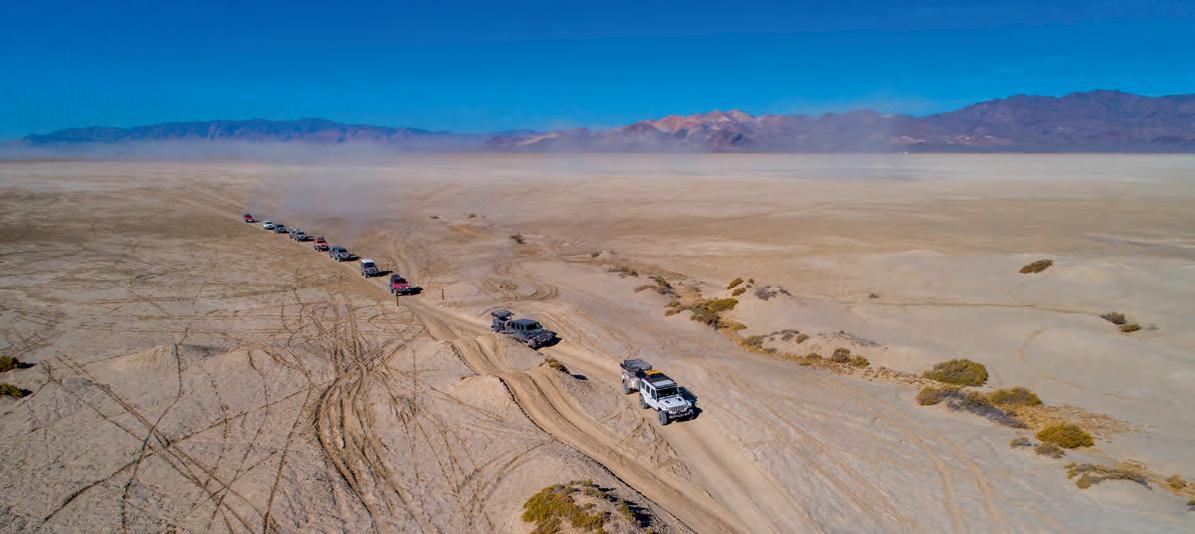
which were islands at the time. As the desert heated up and mirages began to form in the distance, it was difficult to imagine that our camp was once under 400 feet of water.
We made our way toward Fremont’s “column of smoke” to find a large hot spring surrounded by thick reeds. If the 49ers succeeded in crossing the playa, they were rewarded by semi-potable water and grass for their livestock. But many were not so fortunate. An abandoned wagon lay off to the side, a reminder of the hardships they endured.
We had read accounts of wagon trains camped on the playa after days without food or water of any quantity for their livestock. Oxen teams, suffering from dehydration and enticed by the allure of water at the edge of a distant mirage, would charge off in a state of delirium only to collapse at their final resting place.
Their human counterparts became equally desperate. Without beasts to ferry their wagons, many collected what they could carry and striking out afoot. Although many survived the onerous miles


to the next spring, many succumbed to the elements. The following year, as the gravity of the 49ers’ plight became known on the east coast, the Applegate-Lassen would aptly be named The Death Route.
With the playa in our rear view mirrors, we continued north along the base of the Black Rock Range to Double Hot Springs. Early emigrants recorded temperatures of
up to 184 degrees Fahrenheit – and while their turquoise-blue depths are a thing of beauty, many souls have been lost by slipping off the steep edge and into the boiling abyss. Downstream, however, the spring drains into a large agricultural tank that doubles as a hot tub.
To the north, we stopped at the remains of Hardin City, one of the many boom-orbust mining towns of the 1860s silver
Continued on page 56
Left: Remnants of earlier days can be found long many of America’s emigrant trails. When you’re travelling in a well provisioned convoy of modern 4x4s, it’s a sobering reminder of how much harder the wilderness was for those who once followed these paths to the new life they hoped they would find in the West – but which many of them never lived to see
Main pictures: The Black Rock Desert, which was once lay under 400 feet of water, is now a parched and fissured alkali flat through most of the year. Its main playa is 30 miles in length – and there is no speed limit…




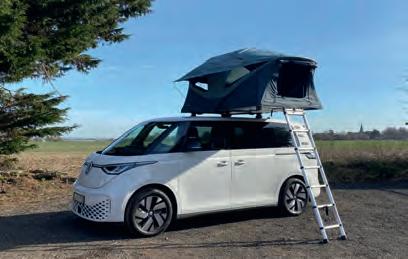



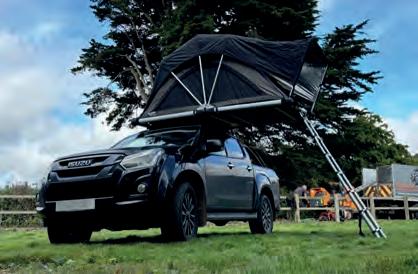










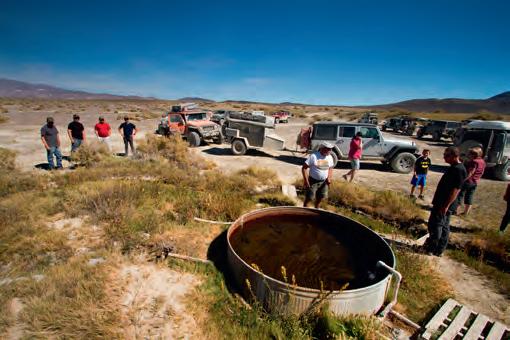

Near Double Hot Spring, which is warm enough to boil potatoes, is a great camping area complete with a makeshift hot tub for bathing. Best heed that warning about the springs themselves, though…
rush, before searching for a place known as Murder Rock. James Hardin, who had passed through the region with the 1849 migration, had collected lead ore to smelt for bullets. Believing that the resulting material contained silver, he kept a portion to be assayed in California. Although the sample was lost in a San Francisco fire and Hardin could not recall exactly where he found the ore, rumours spread like the wind of a lost silver lode in the Black Rock. In addition to ranching, Pete Lassen explored many pursuits, one of which
was prospecting. In April of 1859, Lassen, friend Ed Clapper and a man named Americus Wyatt, while in pursuit of the lost treasure of Hardin City, bedded down in a steep canyon near Hardin’s 1849 camp. Shots rang out as they awoke the next morning; Lassen and Clapper were dead. Wyatt claimed that the Paiute were to blame, but many still speculate that he himself was the assailant.
Lassen’s body was retrieved and given a proper burial, but Clapper remained in a shallow grave in an unknown canyon
– until in 1990, a hiker discovered human bones that were later identified to be his. Our posse of Jeeps made its way up to Murder Rock, formally named Clapper Creek and the site of the duo’s untimely demise. Far from the nearest township, this was surely a lonely place to take one’s final breath.
The sun crept over the eastern horizon, dispersing warm hues over our camp near Soldier Meadows, site of the 1860s
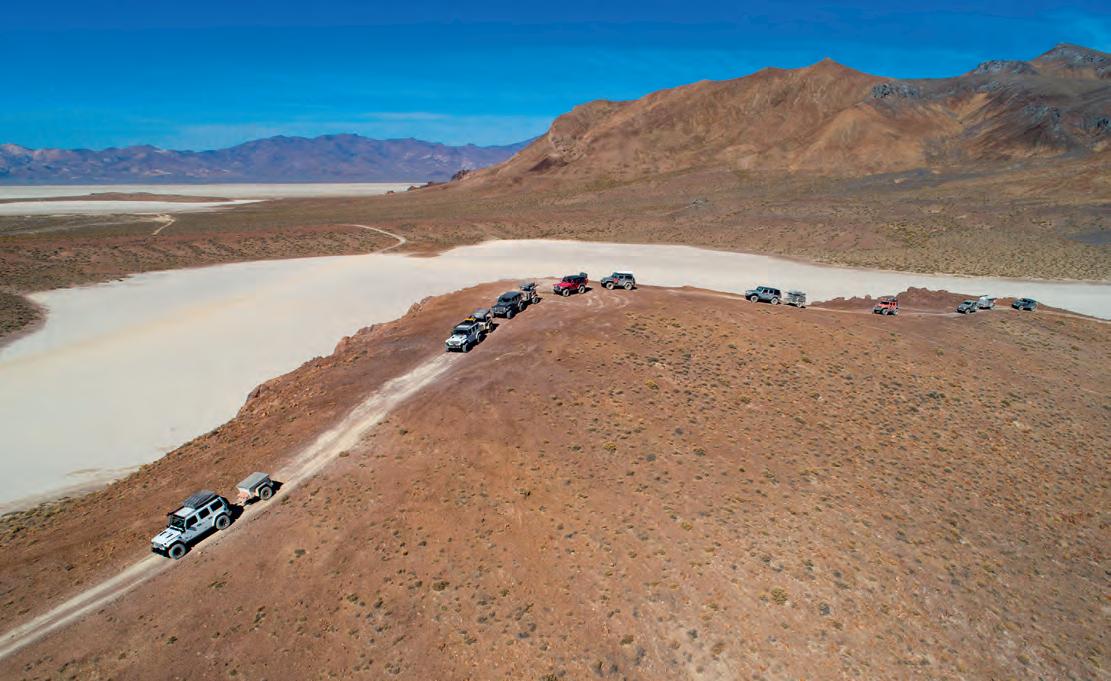

“We resumed our journey, finding a worse state of things as we traveled on. Hundreds of dead cattle and mules were lying along the road. The stench from them was almost intolerable and could not be avoided.”
Amos Batchelder, Sep 15, 1849

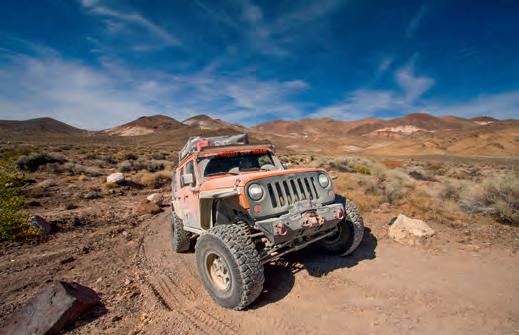
US Cavalry outpost of Camp McGarry. The smell of strong coffee filled the air and ranch-style biscuits and gravy were scooped out of a Dutch oven in steaming heaps as we lined up around the chuck wagon. We departed the Ranchers Cabin, an old wranglers’ hut that is now a BLM
Left: While most of the Applegate-Lassen is quite easy in terms of technical off-roading, there are areas that require four-wheel drive Below: With vertical cliff walls rising 350 from the valley floor, High Rock Canyon is a spectacular curiosity of nature
camp area, and made our way up to Fly Pass.
The pass and adjoining canyon became a nemesis for wagon trains on their journey west. Steep ledges required travellers to unhook their teams from the wagons and lower them down by ropes through the precipitous terrain; a recurring task before reaching High Rock Canyon.
Sheer rock walls towered above and the trail narrowed as we descended into High Rock Canyon and stopped for lunch near the opening of a small cave. Stepping inside revealed a large natural cavern with a smoke-stained ceiling and animal bones scattered about the floor – most likely an ancient camp of Paiute hunters.
Further on, at the base of the cliff, is an area known as The Mailbox, where one can find inscriptions or signatures left
“After leaving the lake, we ascended a hill. We had a very steep hill to go down, where we had to lock both wheels and then hold the wagons back with ropes. The hill was almost perpendicular.”
James S. Tolles, 1849
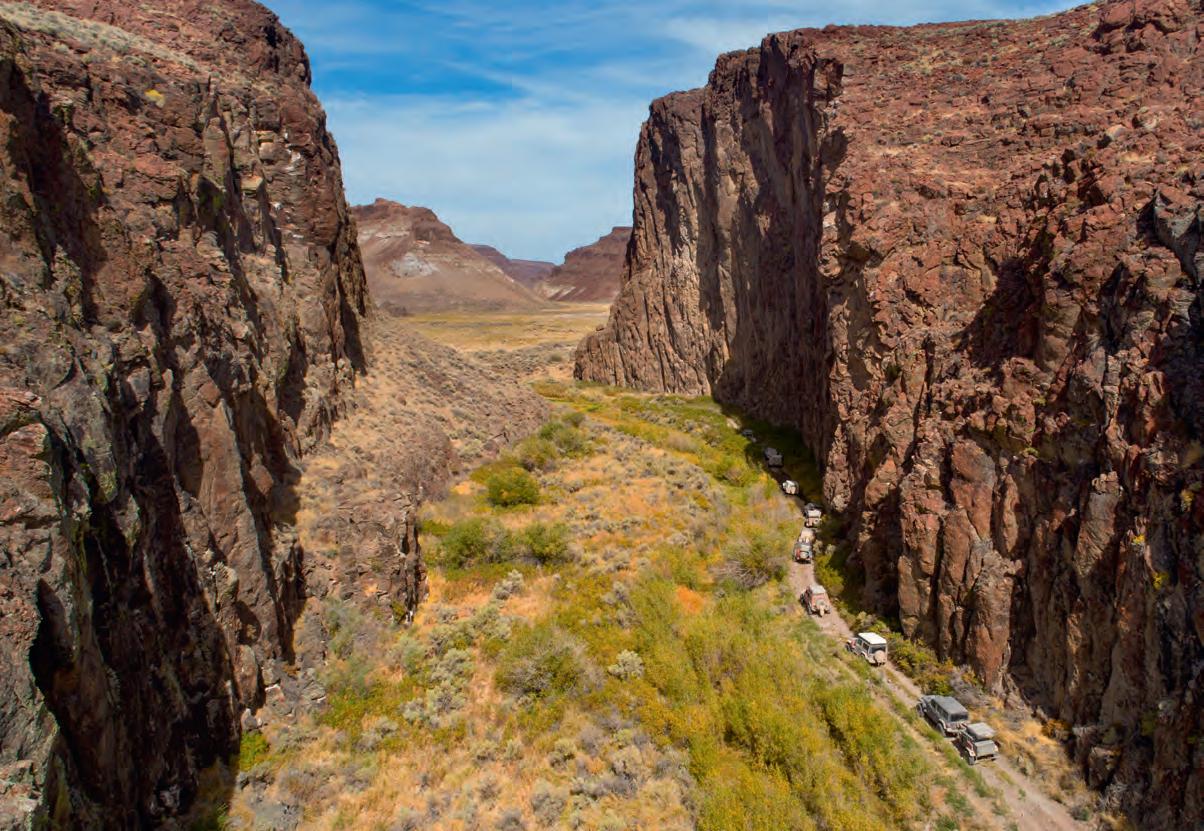





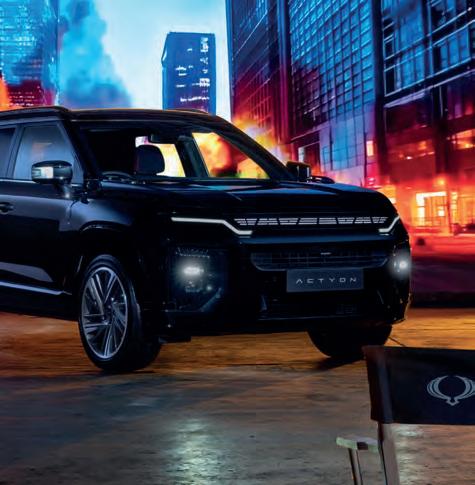




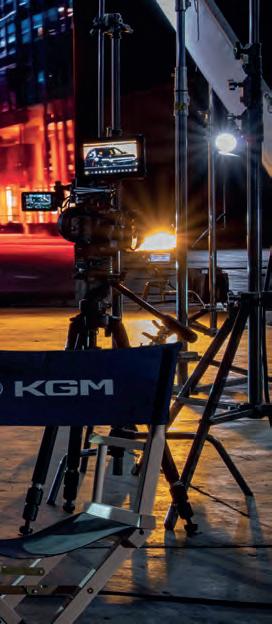









Above left: By the end of summer, many areas of the alkali flat become thick with powdery silt
Above right: The passing of wagons eventually wore a deep trench in the soft soil of High Rock Canyon. In recent years, a bypass has been created that parallels the original route
by the 49ers. Looking up at the 400-foot precipice, we envisioned pioneer accounts of native American attacks in the canyon. The technique was simple and effective: roll large boulders from the cliffs on to the settlers below.
We traced evenly spaced grooves up a steep section of bedrock, evidence of the passing of steel-banded wagon wheels, before reaching the Steven’s Camp homestead. For the pioneers who survived the hardships of crossing the desert, the grassy meadow and crystal-clear creek leading to the camp must have looked like the Garden of Eden.
Said to have been built by 1950s country musician Tennessee Ernie Ford, the ranch
house and surrounding valley was later acquired by the BLM. It now serves as a first-come, first-serve bunk house. The only rules: “clean up after yourself and pack out your trash.”
Turning south, we finally departed the Applegate-Lassen, picked up the Noble’s Cutoff near Gerlach and entered the Smoke Creek Desert. Circling the wagons under a grove of cottonwood trees near Buffalo Creek, Randy fired up the Dutch ovens one last time and we reflected on the tangled web of “shorter and easier” paths that dissected the region.
Ironically, the emigrants who made that right turn following Milton McGee’s fateful error back in 1849 suffered in vain.
Established in 1854 by William Noble, the Cutoff bypassed much of the Black Rock Desert and would later be confirmed as the easiest route over the Sierra Nevada to the bounty buried deep within California’s Gold Country.
But the mid-1800s was an era of exploration and discovery, and many “white spaces” remained on maps of America’s extremities. When they struck out from Independence, Missouri, those bold pioneers took matters, and their lives, into their own hands. As we retired for the night, fried chicken was coming off the grille and we raised a toast to those hearty souls who forged new lives in America’s Wild West.





I’m forever moaning that my busy life is forever preventing me from getting out and doing a bit of green laning, but every now and again an opportunity jumps up and presents itself. Whenever it does, obviously, it would be rude to say no.
Now, a giant perk of this job is the steady stream of test vehicles we’re sent
by assorted manufacturers. And a 750mile weekend-long round trip for a trio of photoshoots, a football match, visiting an old mate and checking out a car I was thinking of buying is definitely the sort of thing I try to time for when I’ve got something big, smooth, comfy and quiet on test.

No such luck on this occasion. But hey, I own something big. It’s plenty comfy enough, too – and since we fitted it with a set of CST Sahara A/T IIs it’s been a lot smoother and quieter than it was on its old mud tyres. So in went a couple of rucksacksized camera backs, a tripod, a couple of light stands, a stepladder (you’d be amazed what goes into photographing a car), an overnight bag and oh yeah, my two sons plus assorted school bags, PE kit, Scouts gear for later… it was quite cramped in there for a while.
Drop the lads at school, take a deep breath, programme my first gig into the satnav and if the motorway behaves itself I’m going to get there with quarter of an hour to spare. And it must have, because I stopped on the way to grab a coffee and still made it ahead of schedule.
The short story is that a dropped tailgate makes a very effective workbench for changing lenses, setting up lights, changing batteries in flashguns (you’d be amazed how many of those we get through) and so on… actually I’ve lapsed
VEHICLE: Isuzu D-Max GO2
YEAR: 2018
RUN BY: Alan Kidd
LAST UPDATE: Apr 2025
FLEET DEBUT: Jan 2020
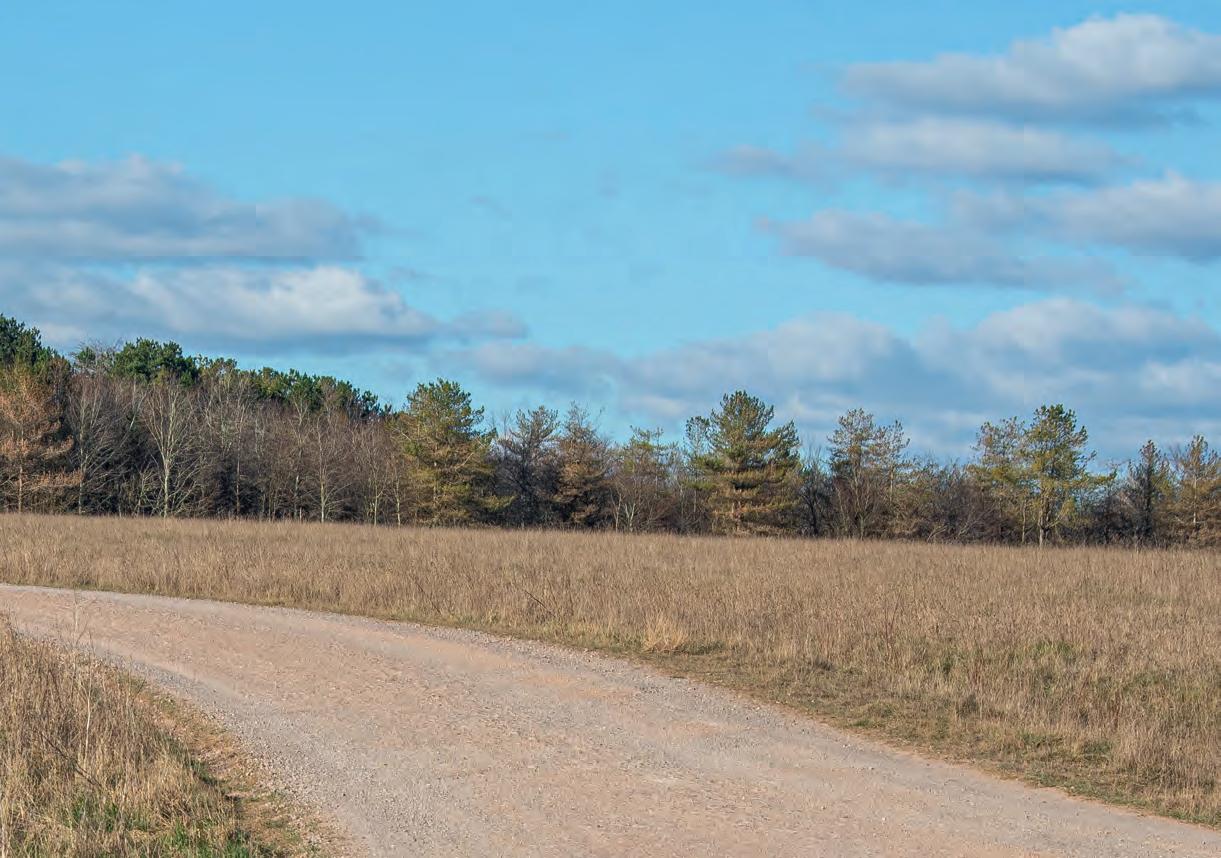
into the long story there. Two photoshoots later, I’m in a crummy motel in Chelmsford with a morning dash to Swindon to look forward to.
Here’s where the opportunity presented itself. Life chose to inflict Swindon Town upon me and with some free time on the Saturday I figured I’d head over there for the match that afternoon before meeting up with my mate Graham (a former editor of this very magazine, no less). This was without knowing that the match was actually going to kick off at 12.30; happily I did learn of this in advance rather than showing up after everyone else had gone home, but it did make for a rather fraught morning. Because guess what? Roadworks! Thousands of ‘em!
It was looking dodgy for a long time but I made it, thanks to some nifty D-road action around High Wycombe when everything bigger was gridlocked, and despite the Curse of Kidd being present Swindon managed to not lose, which was jolly good. Which left me with about
three hours to spare on a beautiful sunny afternoon and a journey ahead of me that went right past Salisbury Plain. Damn.
The only problem really is choosing which lanes to use. I was keen to see how the Saharas performed on loose, dry surfaces, which is very much the sort of stuff they’ll be expected to cope with on an expedition truck, so taking advantage of the weather I headed for the Old Marlborough Road and followed my nose around the multitude of byways, public and permissive, that criss-cross the area.
You definitely don’t get it all to yourself round here, but once I was past Weather Hill and further into the empty parts of the eastern Plain, I was able to trundle along at a realistic dirt-road speed. This, I hasten to add, means something like 10-15mph; if you want to go laning like a comp safari wannabe, take my advice and go do a comp safari instead.
As it is, that sort of speed is enough to put up an impressive plume of dust when the ground is as dry as it was that day. So you still need to be considerate so as not to scare people who see you coming – and

Green laning is a great way of exploring the UK, but many insurance companies don’t cover off-roading and green laning. That’s why our Isuzu – pictured here –is insured by Adrian Flux, a specialist insurance broker that covers off-roading and green laning. Whether you’ve modified your 4x4 or you own a classic 4WD, they can help. Give them a call on 0800 085 5000 for a quote.
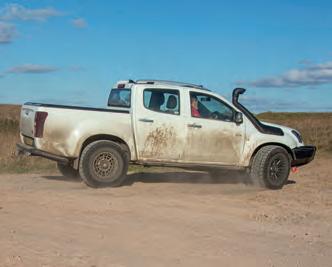

so as not to envelop them in a nasty great cloud of dust, too. The good thing about the wide open tracks on the Plain is that you can see plenty far ahead, anyway, which means no excuses – but also ample opportunity to relax.
So anyway, the tyres didn’t roll around at all on the dry gravel and cinder of the lanes round here. I kept the throttle pinned in a number of sharp corners (again, taking advantage of being able to see there was no-one coming the other way) but it didn’t want to wash wide in four-wheel drive or step the back out in two. Flooring it from a standing start, obviously it did spin the wheels to start with – though even then, it hooked up and got moving pretty quick.
I did manage to find some mud, too. Just a little, and of course the purpose of the experiment was to see how the tyres performed on dry tracks, but, you know, rude not to. Then, as we were setting up the shot, a trio of Army Land Rovers came past… one of them being hauled on the end of a towing strap. Tempting to turn the lens its way, but on this occasion ‘rude not to’ probably doesn’t apply.
While we’re on the subject of rude things, a few issues ago I mentioned a warning light that had taken to showing up on the dash. Two, actually, for the ABS

and traction control. It seemed to be sorted when the truck went back to Isuzu HQ in the autumn, and thankfully it stayed away until after MOT time, but it was coming back on soon enough into the new year and by the time of this trip we’d been to see our nearest main dealer.
They took it apart and found that the nearside front wheel speed sensor was damaged. Two hours at £120 each plus the dreaded, but at least now I knew what we were looking at. What’ll it cost to replace? £352.61, again plus VAT, for the part, and another couple of hours on the spanners.
So, just over £700, sir, but we don’t have the part you need in stock so you’ll have to make another appointment.
And make another appointment I did, at the local independent garage that’s been looking after my cars for two decades. I’m not even sure why I went to the main dealer in the first place. Anyway, I’m writing this having just come home from picking it up with the job done. They found play in the wheel bearing and adjusted it out, too, and handed me a bill for… £153.59. I know main dealers have higher overheads, but you’ve got to wonder.

n Access from 3pm on Saturday 5th July
n Driver & All Passengers Get in Free
n £1 General Yellow Cars
n £10 Grouped Yellow Display Vehicles
n Grouped Display Vehicles must be booked in advance
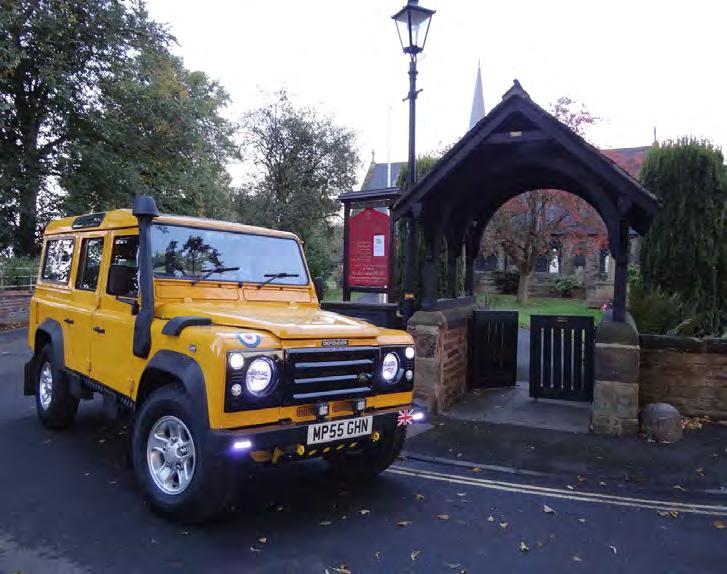
n Access on Sunday 6th July 10am-4pm
n Save 20% when you book in advance
n £8 per adult | £4 per child (5-15)
n (On the Gate £10 per adult | £5 per child)
n Free parking
n Under 5’s go free
n Dogs on short leads welcome
Real ale and cider tent | Street food vendors and food court | Picnic area
Shop from our many stalls selling everything from car accessories, camping equipment, gifts and novelties | Children’s inflatables and activities
Thousands of yellow cars are coming together for the biggest gathering of yellow cars on record. Bear witness to the spectacleit’s bound to put a smile on faces young and old alike! Take a look around our groups of display vehicles, including Super Cars, Classics, 4x4s and Custom Cars. And look out for some famous cars and faces you just might recognise.

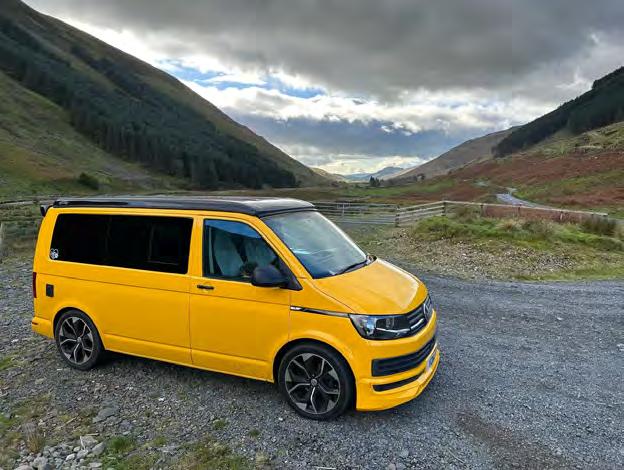

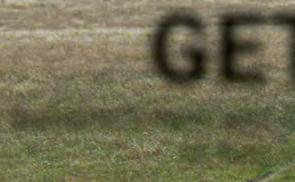
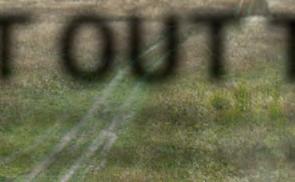
Summer’s here and it’s time to enjoy the countryside. We present 10 routes to help you get the best from Britain’s green lanes
Classic Cruiser becomes a different kind of Troopy
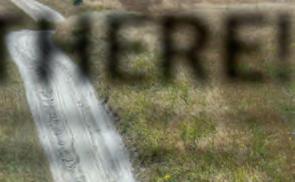

On top of the world – via the road less travelled
Done with drag racing? Land Rovers await…
JUNE 2025 ISSUE: ON SALE 8 MAY
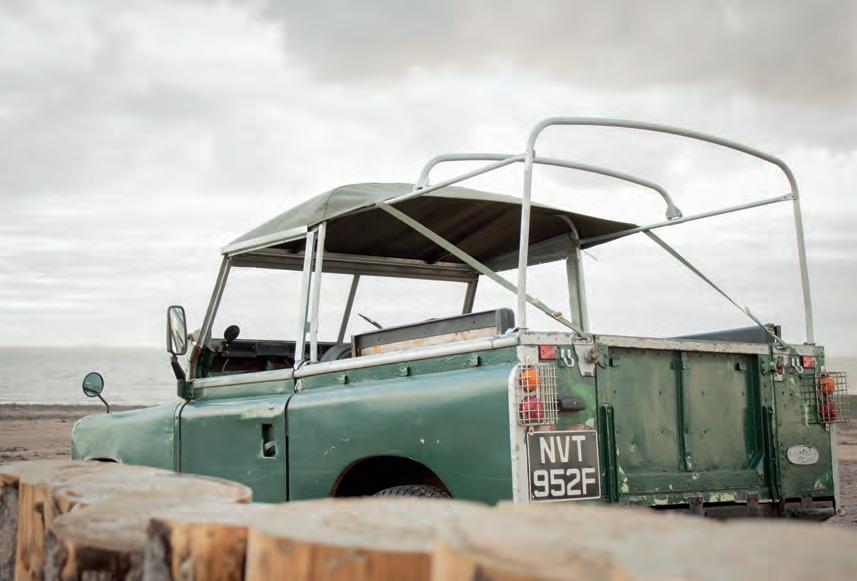




















Heritage Leather Rim Steering Wheel




Product Code: HER-WH-04
6061 Billet Aluminium




Black Leather Rim
Black Anodised Body 48 & 36 Spine Boss’s Kits




Heritage Wood Rim Steering Wheel
Product Code: HER-WH-01
6061 Billet Aluminium
Beech Wood Rim
Bikini Hoods o er a stylish alternative to the full hood providing protection from the elements whilst o ering an almost open top driving experience. The Bikini hood can be removed and put on in under a minute, a fuss free alternative so you can enjoy driving your Land Rover ‘Hood Free’ but still having the reassurance of adequate protection from showers and sun.
+P&P
(Including Boss Kit)
Heritage 1948 is dedicated to producing a range of outstanding quality canvas hoods for Series Land Rovers. Unlike some of our competitors, all of our Land Rover hoods are handmade in our Somerset factory from superior quality ‘Moorland’ canvas









Our handmade hoods are inherently more accurate than machine produced counterparts allowing for an enhanced t and exceptional quality control.
Heritage 1948 has taken great care to ensure all our Land Rover hoods have an enhanced life span and are all nished with period correct solid brass ttings.
Mirror nished Body
48 & 36 Spine Boss’s Kits


+P&P
(Including Boss Kit)






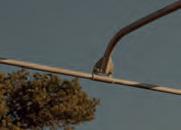
Heritage 1948 supply a Superior Quality Range of British Made Hood Sticks Sets and Component Parts to t many variations of Land Rover Hoods.


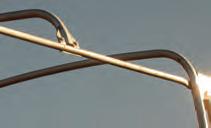














Work ready. Life ready. On or off-road ready. Isuzu’s award-winning pick-up is equipped with even smarter styling, stronger performance and safer technology. Delivering the reassuring capability and durability you expect from Isuzu, our tough workhorse takes comfort and refinement to the next level.



Wherever, whenever, The New Isuzu





